

10 Time Management Activities For High School Students
Are you a high schooler struggling to complete assignments and projects on time?
It is very common to find students, especially high schoolers juggling multiple responsibilities and commitments that they are not able to complete their tasks on time. They have so much on their plate which makes it difficult for them to organize and manage their to-do list. As a consequence, they are not able to meet deadlines and end up in a chaos of assignments, projects, assessments, and many more.
During high school, It becomes crucial for students to learn to strike a balance between their academic and personal commitments. To practice so, activities can come to the rescue. These can help in bringing creativity and innovation to the classroom all the while learning to manage time.
This article presents you with a compilation of different activities that can be easily employed in order to learn to optimize their time, achieve greater productivity, and reduce unnecessary stress. Activities can help students develop a sense of control over their daily routines and prepare themselves for success both in school and beyond.
Innovative activities to teach time management to high school students
1. the real office.

High school students are on the path to building a better future with further academics and networking. The activity focuses on facing the real world with time management skills.
- Choose two captains for the team
- Let captains select their teams including 5 members
- Now, each team is an official team wherein the captain becomes the boss who manages different departments
- Give different types of tasks to the boss and ask him/her to complete them within a given time frame
- The tasks could be writing a poem, getting a few things from other teachers, finding some books from the library, and so on
- The challenge is for the boss to delegate tasks according to expertise so time is taken into account
As high schoolers turn into employees, they are more likely to understand how managing time in a corporate life works. This activity also promotes team building and time management through strict deadlines for tasks.
2. Hunt for Time!

The activity is designed to help high school students practice time management skills through a fun and interactive scavenger hunt theme.
- Start by dividing the class into small teams of 3-4 students each
- Assign points to different elements in the scavenger hunt
- It can include getting a certain book from the library, learning a certain answer, writing an essay, or finding a leaf from the school ground
- The task is to strategize and prioritize the hunting process to maximize points in the minimum time
- As the activity ends, calculate points and assess the student’s learning about time
This activity can be modified to suit different class sizes, time frames, and skill levels. You can also encourage the students to create unique time management hunt ideas to add to the list.
3. Be the Auditor!

Time Management starts with reflecting on one’s everyday behavior and interaction with the surroundings. This activity throws light on first recognizing the shortcomings on a personal level.
- Start by introducing the concept of time auditing
- Ask the students to keep track of their activities for one day
- They should record the time spent on each activity and a brief description of what they did
- Ask the students to review their activity log and calculate the total time spent on each activity
- They can also categorize their activities into different groups, such as schoolwork, leisure or socializing
- Ask the students to reflect on their activity log and identify areas to improve their time management
- For example, they may notice that they spend too much time on social media or watching TV and not enough time studying or exercising
- Finally, ask the students to share their insights and strategies with the class
This activity can help high school students become more aware of how they spend their time and identify areas for improvement. It also encourages them to set specific goals and develop a plan. Furthermore, this can also be an interesting back-to-school activity for the kids.
4. Pomodoro Technique

The activity involves introducing the Pomodoro Technique to the students and explaining how it works. The Pomodoro Technique involves breaking work into intervals of 25 minutes, followed by a short break of 5 minutes.
- Explain how to set the timer or stopwatch to 25 minutes for work and 5 minutes for breaks
- Group the students into teams
- Give each group an assignment to do within a certain amount of time.
- Ask the students to apply the Pomodoro Technique to finish the work, which might be anything from creating a marketing strategy to redesigning a brand’s logo.
- Work should be done for 25 minutes, followed by a 5-minute break, and so on until the assignment is finished
- Ask the students to consider their experience with the Pomodoro Technique after the assignment is finished
As high school students are on their way to deciding careers or further studies, introduction to such techniques is a smart way to make them aware and confident.
5. Jigsaw Puzzle

Jigsaw puzzles have been used in various time management activities. This activity also focuses on team building and managing time in an efficient manner.
- To conduct this activity, take a big Jigsaw puzzle
- Divide the students into teams and each team shall have the puzzle
- After this, ask them to start making the puzzle without having the big picture
- They need to strategize, learn, and come up with their own creativity to solve the puzzle in the minimum possible time.
With this activity, students learn to communicate with their team members while ensuring to complete the puzzle in the minimum possible time. It helps them bring their leadership skills as it is a deadline-oriented task. Hence, this can also be a fun leadership activity for young adults.
6. The Matrix Fun!

High school students are often concerned about their multiple tasks and make mistakes in prioritizing them. This activity involves proper allocation of tasks in hand.
- Introduce the concept of a task matrix and its importance in managing time effectively
- Draw a grid on the board with four quadrants: Urgent and Important , Important but Not Urgent, Urgent but Not Important , and Not Urgent and Not Important
- Ask the students to brainstorm a list of all the tasks they need to complete in the upcoming week
- Write them on sticky notes or index cards
- Provide each student with a set of sticky notes
- Ask the students to categorize their tasks by placing them in the appropriate quadrant on the board
- Set a timer for 10-15 minutes and ask the students to prioritize the tasks in each quadrant
- They should focus on completing the tasks in the Urgent and Important quadrants first, followed by the tasks in the Important but Not Urgent quadrant
- Ask the students to reflect on their task matrix and identify any tasks that can be eliminated or delegated
As students get an opportunity to actually assign their tasks into quadrants, they are more likely to understand the importance of prioritizing tasks and managing time effectively.
7. Reflect and Realize

The objective of this activity is to help high school students experience the consequences of poor time management and develop strategies for managing their time more effectively
- Divide the student’s teams of 4 members each
- Explain that each group will be given a worksheet with a scenario and a set amount of time to complete the task
- It could be a creative scenario to find a solution or a corporate-level issue kind of scenario
- Set a timer for the given amount of time, and ask the groups to work on their task
- At the end of the time limit, ask the groups to stop working and reflect on their progress
- Ask them to identify any areas where they struggled and any strategies they used to manage their time effectively
As students exchange their sheets, they realize the importance of managing time effectively to complete a given task. It also helps them reflect their behavior towards time.
8. Clap Clap!

The subjective understanding of time often differs from practicality. This activity is all about getting to know how time works for different people.
- To conduct this activity, ask students to hide all clocks and watches in the classroom
- Now, blindfold them and let them sit
- Ask them to mentally calculate two minutes and clap when they feel 2 minutes are over
- Make sure to record the process to explain later.
As students count and clap at different timings, it shows how everyone assumes time in a different way. Students may also learn about the importance of mental math calculations and perceptions toward time.
9. Classify and Discuss!

Time management also focuses on prioritizing and strategizing before taking any task in hand. This is a challenging activity wherein students need to understand if a certain task is actually important.
- To conduct this activity, divide students into teams of 2 members each
- Now, ask students different scenarios and they need to classify them either as Time Teacher or Time Waster
- For example, if the scenario is about playing for 3 hours in a day, both teams need to classify if it is a time teacher or time waster
- In case both teams have opposite views on a particular scenario, they are free to discuss it wherein other students can also join
This activity is about understanding how different tasks are prioritized differently by students. It helps them set time smartly and learn about setting priorities.
10. Stranded on an Island

Any situation in life demands the right usage of timing and decision-making skills. This theme-based activity enables students to form teams and understand the criticality of different situations.
- To conduct this activity, make a scenario where students are stranded on an island
- Now, give them a long list of materials that are available on an island
- Within 2 minutes, they need to decide what is essential and what is not essential to make their way out from the island
- Invite an open discussion about how they manage to think about the solution in 2 minutes
When students are set in a pressured environment, they are more likely to manage that time wisely. The activity helps them understand the importance of choosing the right resources in a time-sensitive situation.
Final Word
Grasping the important skill of time management might be there on every high schooler’s bucket list. Time management activities offer a comprehensive learning experience as they involve various aspects of organizing, planning, and decision-making. Right from being creatively smart to practically analytical, the activities offer a package of knowledge on time management.
Along with the above-mentioned activities, teachers should try creating a diversified learning environment through different platforms. Online games and productivity applications for time management can also be significantly influential for high schoolers. Teachers should note that their suggestions and open discussions help students with time management in everyday life.

Sananda Bhattacharya, Chief Editor of TheHighSchooler, is dedicated to enhancing operations and growth. With degrees in Literature and Asian Studies from Presidency University, Kolkata, she leverages her educational and innovative background to shape TheHighSchooler into a pivotal resource hub. Providing valuable insights, practical activities, and guidance on school life, graduation, scholarships, and more, Sananda’s leadership enriches the journey of high school students.
Explore a plethora of invaluable resources and insights tailored for high schoolers at TheHighSchooler, under the guidance of Sananda Bhattacharya’s expertise. You can follow her on Linkedin
Leave a Comment Cancel reply
Save my name, email, and website in this browser for the next time I comment.

12 Time Management Worksheet for Students & Adults
Do you find yourself constantly rushing to get important tasks done at the last minute? Have you ever missed important deadlines? Do you have a reputation for being constantly late for meetings, classes, or other important events?
At work, you probably find it a challenge to keep on top of all the tasks you need to finish. Your productivity may have taken a nosedive, and you’re not the only one who has noticed.
If you’re a student, you might be having difficulties meeting the demands of academics and extracurricular commitments. Perhaps you are even dissatisfied with your academic performance.
At home, you are probably faced with a seemingly endless parade of chores, and no longer have quality time for your family and yourself.
If any of the above scenarios resonate with you, it could be that you need some help managing your time.
Table of Contents
How Can I Effectively Manage My Time?
Effective time management requires two things: planning and organizing.
Time management involves a three-step process:
Step 1: Assessing how you currently use your time.
Step 2: Creating a schedule.
Step 3: Following the schedule.
It is important that you establish your daily schedule around your activities and commitments.
Make sure that you identify which activities are flexible and which are fixed. For instance, work hours are usually set to eight hours each day, so that’s a fixed schedule. Meanwhile, sleep and recreational activities are usually flexible.
As much as possible, be specific in your schedule-making. For example, if you just write “do chores” for Saturday morning, that could mean anything from a few minutes spent washing the dishes to half a day’s work of organizing the hallway closet.
Estimate the time you need for the activity and block that time out in your timetable.
In addition, you can use some time-management tools and techniques to become more organized.
The Pomodoro Technique helps increase your productivity. Meanwhile, the Pareto Principle teaches you how to get maximum results in the least amount of time.
Finally, the Eisenhower Matrix helps you identify which activities are urgent and important so you can act on them appropriately.
Applying all these strategies can help you manage your time more effectively.
To get you started on the habit of managing your time well, we have listed 12 time management worksheet examples. These worksheets are all downloadable and printable.
Let’s check them out.
12 Time Management Worksheet Examples
1. 3 time audit printable worksheets and templates.

Check out Time Audit Printable Worksheets and Templates on Etsy
Make intentional choices on how to manage your time with these Time Audit worksheets.
Each template has designated spaces to log tasks/activities done throughout the week, providing an overview of where you focus your energy and effort.
These templates are the perfect tool for ensuring that your daily efforts are contributing to the fulfillment of your goals.
2. Daily Time Management Log
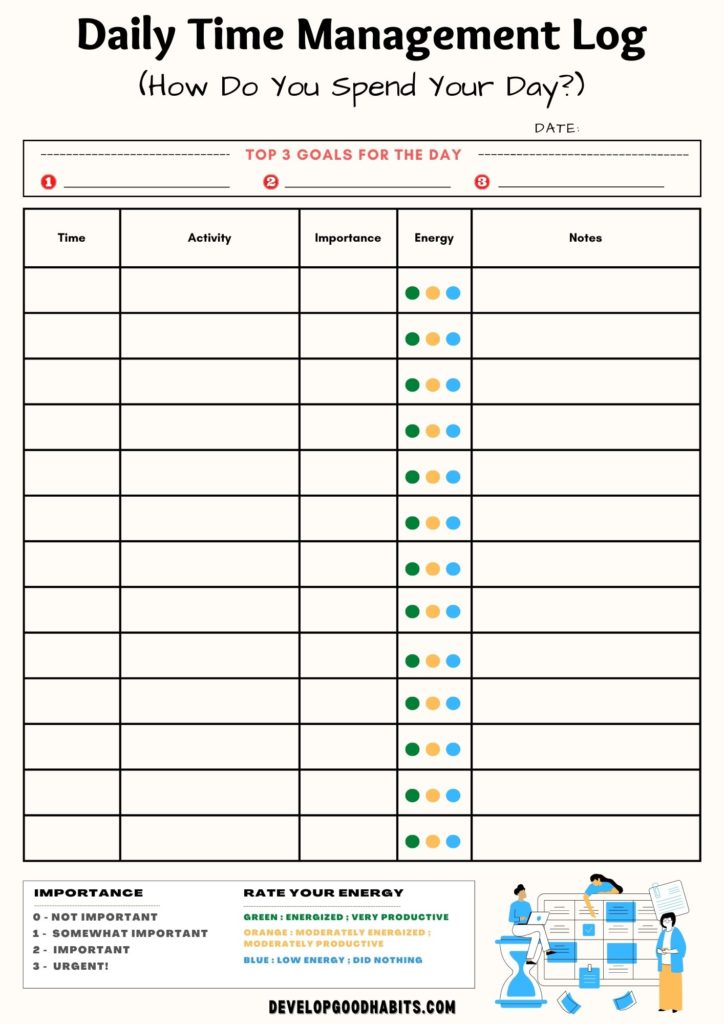
Download the PDF
Are you hard-pressed to finish several daily tasks and not sure where to start? Our time management log can help keep you from becoming overwhelmed by everything you need to accomplish.
This template features a section for specifying your top three goals for the day. Then, a large section of the template is dedicated to supporting activities and to-dos that help achieve the top three goals. A column in the template lets you tag an activity’s level of importance (0 = Not Important to 3 = Urgent!).
Most importantly, through colored dots, this log allows you to track how productive you are by identifying your energy level while doing an activity.
You can indicate whether you’re very energized (green), moderately energized (yellow), or low on energy (blue) while doing any of the activities you’ve logged for the day into the template.
3. Weekly Time Management Log
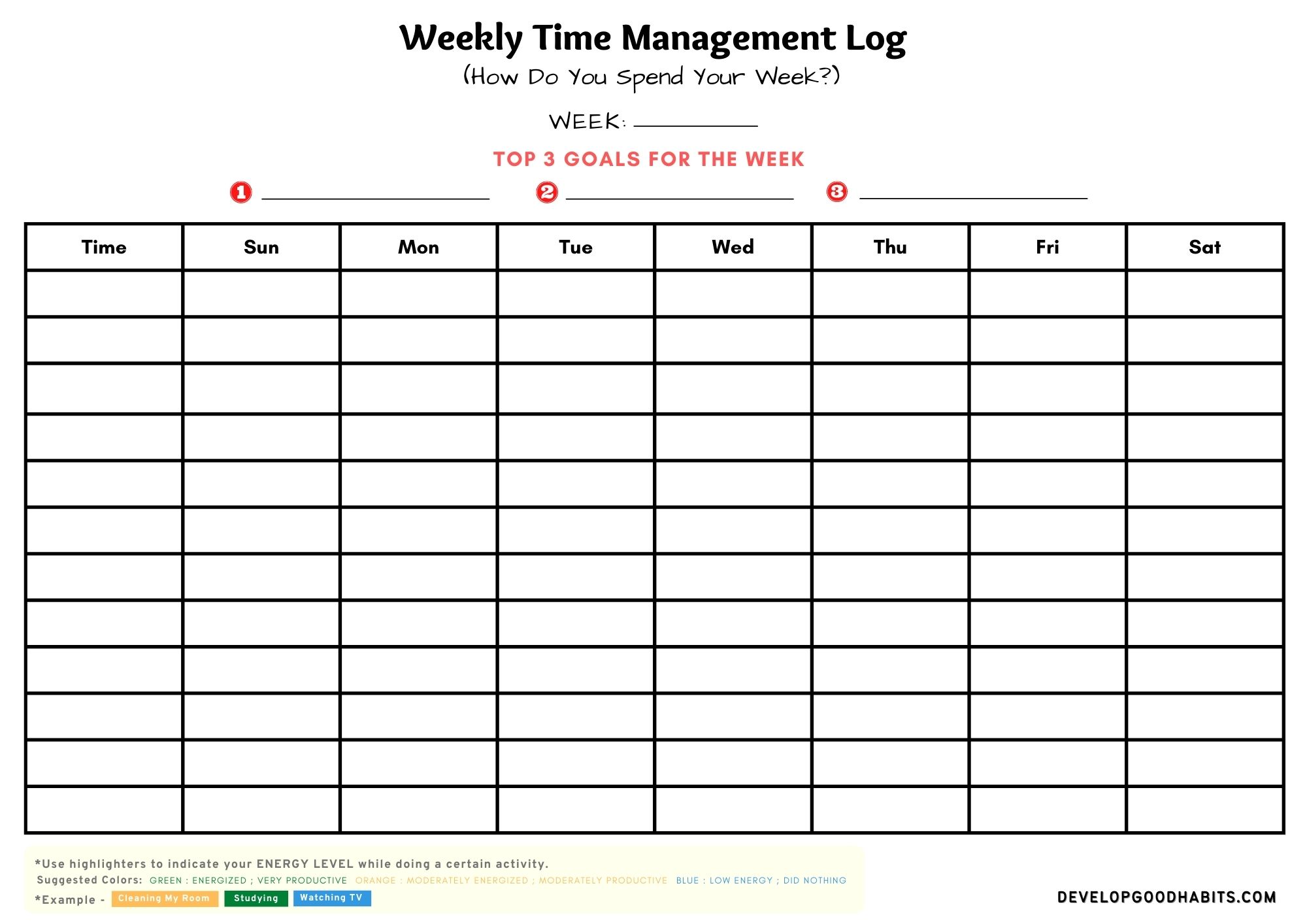
Looking for an appropriate time management log for all your weekly activities? We designed this template just for that purpose. Near the header is space for writing your top three goals of the week.
An eight-column table offers enough space to record your schedule for the week and plot out how to manage your time well.
You can use colored highlighters to highlight specific activities and indicate your energy level while doing this activity.
As a suggestion, green can mean highly energized and very productive; orange can represent moderately energized and moderately productive; and blue can mean low energy or did nothing.
4. Time Manager
via Humboldt State University
College life can be hectic, especially when it comes to your schedule.
It takes some strategic planning to stay on top of everything. That’s why it’s essential to find the right time-management tool.
A time manager like this one ensures that students don’t miss classes and important events. It also helps keep track of priority tasks.
This worksheet also has space where you can write down to-do items that you need to accomplish for the week.
The worksheet features a time block with one-hour intervals for the weekdays. There isn’t any time blocking for the weekend schedule, which is meant to encourage students to take time off from academic work and focus more on self-care .
5. Time Tracking Worksheet
This worksheet helps you track your activities. It features a column for the estimated duration of your task, and another column for recording the actual time you spent on the activity.
Furthermore, it has space for recording the frequency of the activity, which is useful for tracking your weekly schedule.
Finally, there is a column for identifying whether the task is important or not. This way, you can pinpoint which of your activities are significant or merely time sinks.
6. Where Does My Time Go?
Need support for your new time-management habit? This worksheet applies several strategies and principles for effectively managing your time.
The worksheet has 30-minute intervals to keep track of the precise time you spend on every activity.
It also has an Eisenhower Matrix to help you identify if a task is your highest priority or if it can be done later in the day. ( Check out this post for an in-depth discussion and helpful tips on how to effectively use the Eisenhower Matrix .)
With this template, you also have the opportunity to reflect on how your schedule for the day went.
The template has space where you can list “activities that deserve more time,” as well as those that deserve less. Lastly, a space is also provided where you can write initial plans for the following day.
7. Weekly Time Management Tracker
This time tracker has been designed to work with your schedule. Once printed out, it gives you a clear view of your daily schedule so you can identify which activities are consuming most of your time.
To maximize this tracker’s potential to help manage your time better, you can use categories to track how you spend your day . Examples of categories include:
- Self-care activities (massage, meditation, etc.)
- Work-related activities (including meetings, special assignments, etc.)
- Health and fitness activities (time at the gym, meal preparation, etc.)
8. Daily Time Blocking Worksheet
Schedules can be hectic, so we need a system to help us stay on top of things. This time-blocking worksheet helps keep the stress at bay when you need to get a lot of things done.
Although effective time management is a serious matter, we can still infuse it with fun elements. One way to do this is by using colorful pens when filling in your timetable.
Moreover, stickers and printables can add visual interest and give you an amusing way of categorizing and tracking your schedules.
9. Bullet Journal Time Tracker Printable
This time tracker serves you well as a daily or weekly time log.
The heart at the beginning of each line represents the category of the activity you list down. This tracker’s creator suggests color coding the hearts to represent each category of activity.
Space for the color code “key” is also provided at the top right part of the tracker page to help you navigate this worksheet.
There is also a space where you can write down notes, reminders, and other information you want to keep a record of about your day.
10. 31-Day Time Tracker
View this post on Instagram A post shared by Kate | Plan To Succeed (@plantosucceed)
This time tracker lets you track how you spend your 24 hours every day for 31 days. You can use a color-coded system to identify the activities that you do throughout the day.
Mildliners and Stabilo highlighters work well for this type of time tracker.
11. Your Time Buttoned Up
This worksheet has a time-blocking feature with 30-minute intervals. The template lets you track your schedule for the whole week, from 7 am to 2 am.
However, the standout feature here is color-coded dots that correspond to how productive your activity is.
Green is very productive; orange is moderately productive; and red is wasted time (perhaps it’s time to admit that Facebook addiction and kick the habit).
12. Daily Time Log
Logging all of your activities trains your mind to consider time a valuable commodity. It encourages you to engage in activities that are of value to you.
The advantage of having a tracker like this is that, over a certain period, you will be able to see a pattern of how you use your time.
Is it for something that enriches you? Or do you spend a huge chunk of the day on time-sink activities like excessive social media use ?
With this information, you can adjust your priorities and manage your time more effectively.
Final Thoughts on Time Management Worksheet for Students & Adults
There you have it—time management worksheet examples to inspire you as you work your way toward improved productivity and better health and well-being.
When you use a time-management tool such as the worksheets featured today, avoid dwelling on the things you fail to achieve. You always have the option of rescheduling them. Instead, focus on celebrating the tasks you do accomplish.
For more ideas, read our post on effective time management activities and exercises . If you're using the Pomodoro Technique, check out our favorite time blocking templates here . And if you need more guidance, check out these SMART goals examples for time management .
Remember to reward yourself when you’ve achieved your goals. We’ve got some awesome suggestions on how you can reward yourself in this post .
Furthermore, remember to take a break after accomplishing important activities. Allow yourself to decompress.
Always take your health and well-being into consideration when implementing time-management strategies for productivity. Make sure that you do not sacrifice sleep in an effort to get things done.
Here’s to a more organized and productive year!
Finally, if you want to level up your productivity and time management skills, then watch this free video about the 9 productivity habits you can build at work .


Time Management Activities for High School Students

As a high school teacher, parent, or related service provider, you are undoubtedly well aware of the importance of time management skills for your students. There are so many effective time management activities for high school students that you can use in your classroom. These activities will help your students learn how to better manage their time and develop important time management skills.
WHY ARE TIME MANAGEMENT ACTIVITIES FOR HIGH SCHOOL STUDENTS IMPORTANT?
Time management activities for high school students are important because they help them develop the skills they need to succeed. These time management skills are essential for effective study habits and organization of tasks, as well as for personal development. These activities should help students learn how to prioritize tasks, plan ahead and manage their time wisely. With proper time management skills, teens can see the big picture of their goals.
ACTIVITIES TO IMPROVE ORGANIZATIONAL SKILLS FOR HIGH SCHOOL STUDENTS
When students are organized efficiently, they can manage their time better as they work through various tasks. You can teach high school students organizational skills in many ways including time management activities. These activities can range from setting up a daily or weekly schedule to using project management tools like Trello or Asana.
Use A Planner
Encourage your students to use a daily, monthly, or weekly planner or agenda to track their responsibilities and tasks. They should get in the habit of physically writing out events with a pen or pencil. This will help them become more organized in their activities and make it easier for them to manage their time effectively. It will also allow them to look back at what they accomplished yesterday to gain motivation for today!
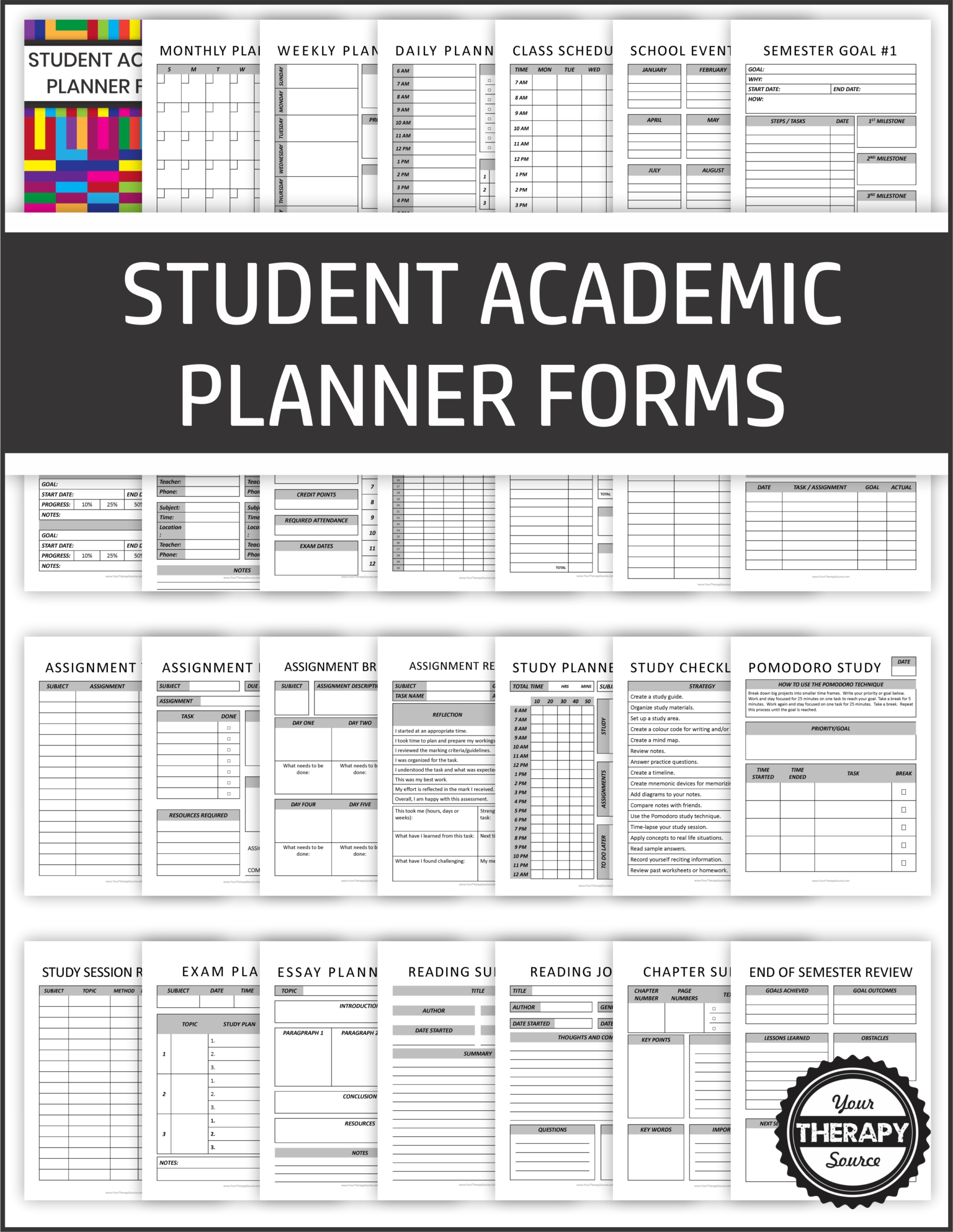
Student Planner PDF – Forms and Lists
Set up a schedule.
Having a schedule in place is an important part of time management. Time management activities should focus on setting up and following a routine that allows students to work through tasks systematically. This can be done by having students plan out their day, week, or semester ahead of time.
Use Time Tracking Tools
Time tracking tools like Time Doctor or Rescue Time are great for helping students see where their time is going. Encourage them to use these tools to track how much time they spend on various tasks or activities, so they can better manage their time.
TIME MANAGEMENT ACTIVITIES FOR HIGH SCHOOL STUDENTS TO IMPROVE PLANNING SKILLS
Time management activities for high school students should also focus on planning skills. You can help your students develop planning skills by having them work on activities that force them to plan ahead. When high school students improve their planning skills , they will also develop their time management skills.
Encourage Students To Set Goals for Themselves
Encourage your students to set realistic, achievable goals for themselves in the short and long term. This will help them stay focused and motivated as they work toward their goals. Read more about SMART Goals for Teens .
Break Down Large Tasks
When it comes to large tasks, it can be overwhelming for students if they try to tackle them all at once. Help your students learn how to break down big tasks into smaller ones. This will make the task less daunting and easier to manage.
Learn Time Estimation
Time estimation is an important skill that can help with planning tasks. When students know how to estimate the amount of time they need to complete a task or project, they can better plan out and manage their time.
Jigsaw Puzzles
Jigsaw puzzles are a fun way for students to learn how to prioritize tasks and plan ahead. Students need to be able to plan where they put each subsequent piece of the puzzle.
Grab a deck of cards and play! Card games can also help students learn how to plan ahead. Playing card games requires students to think strategically about their moves and prioritize tasks according to what will be most beneficial for them in the end.
ACTIVITIES TO PRACTICE PRIORITIZING TASKS
Prioritizing tasks is an essential skill for successful time management. Students will improve their time management skills when they work through activities that help them put their most important tasks first.
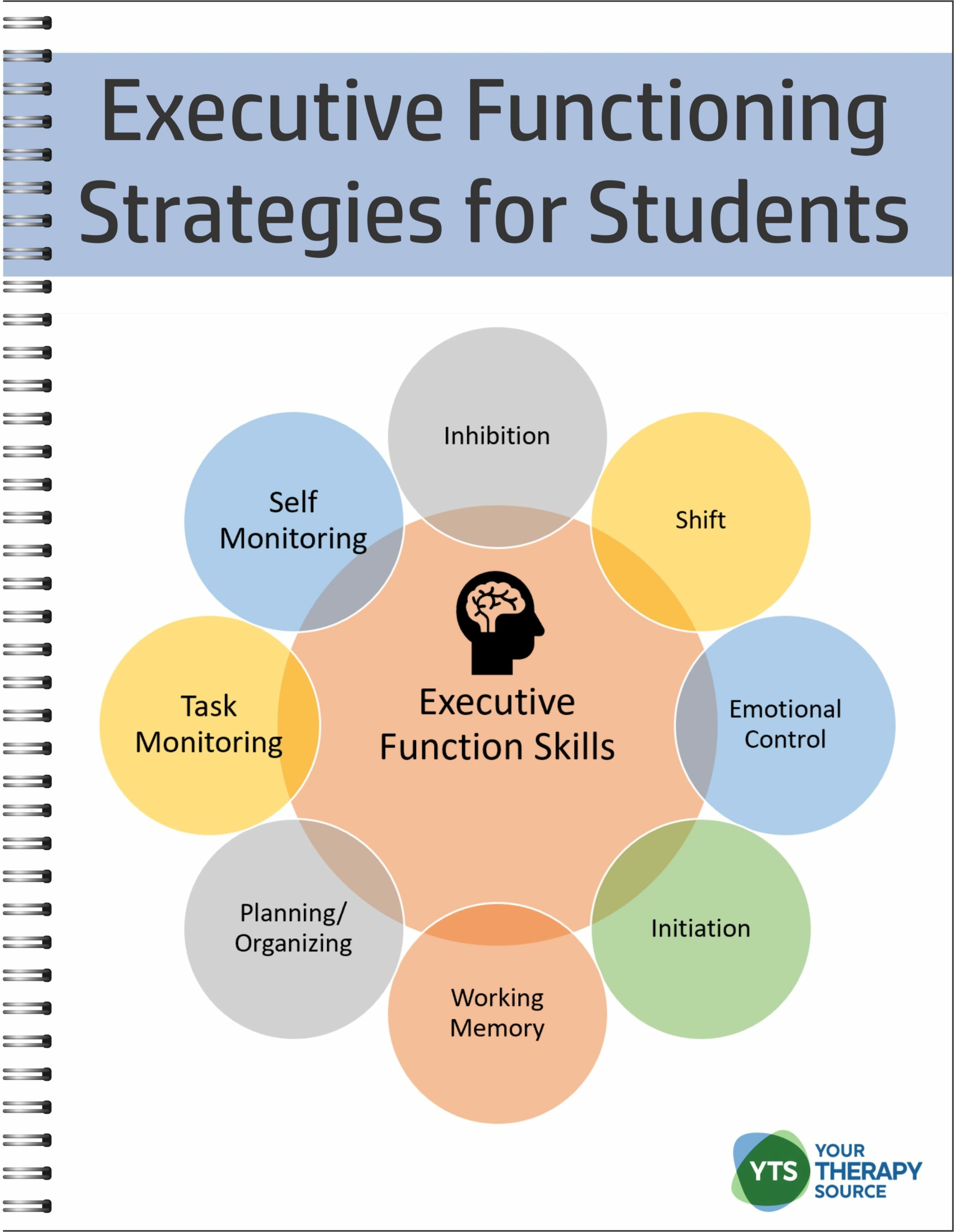
Executive Functioning Strategies for Students
Time blocking.
This is an effective way for students to plan their day in advance and organize their time accordingly. You can have them use a calendar or chart to block out specific times for studying, completing assignments, taking breaks, etc. Students can parcel out time into hourly blocks to help them accomplish their goals. The number of blocks is not important. The goal is to learn the process for themselves.
Time Mapping
Time mapping is a great activity that helps students understand the importance of prioritizing tasks. This involves breaking down a task into its component parts and then deciding which one needs to be done first.
Managing Interruptions
Interruptions can derail even the best time management plans. Teach your students how to manage interruptions, such as setting aside specific times for checking emails, answering texts, etc.
TIME MANAGEMENT ACTIVITIES FOR HIGH SCHOOL STUDENTS TO DEVELOP PRODUCTIVITY SKILLS
Productivity skills can help your students get more done in less time. You can help students advance their productivity skills with the right routine activities and productivity steps .
This is a great activity for teaching students how to focus their attention when working on tasks or assignments. Have them set aside a certain amount of time to focus exclusively on one task or project, and free themselves from distractions.
Take Time To Rest
Encourage your students to set aside specific times during the day for rest and relaxation. This will help them stay energized and refreshed, so they can be more productive when it comes time to do their work.
Practice Time Management Strategies
It’s also important that your students practice the time management strategies they learn in class. Have them create an action plan so they can implement the strategies on a regular basis and measure their progress over time. This will help them become more proficient at managing their time, and in turn, be more productive.
TIME MANAGEMENT ACTIVITIES FOR HIGH SCHOOL STUDENTS TO IMPROVE EXECUTIVE FUNCTIONING SKILLS
Sadly, executive functioning skills elude many students who are working their way through their high school education. These skills are essential for managing time effectively because they involve planning and organizing tasks, setting goals, solving problems, and more. When students work on their goals for executive functioning , they begin to gain more control over their own actions.
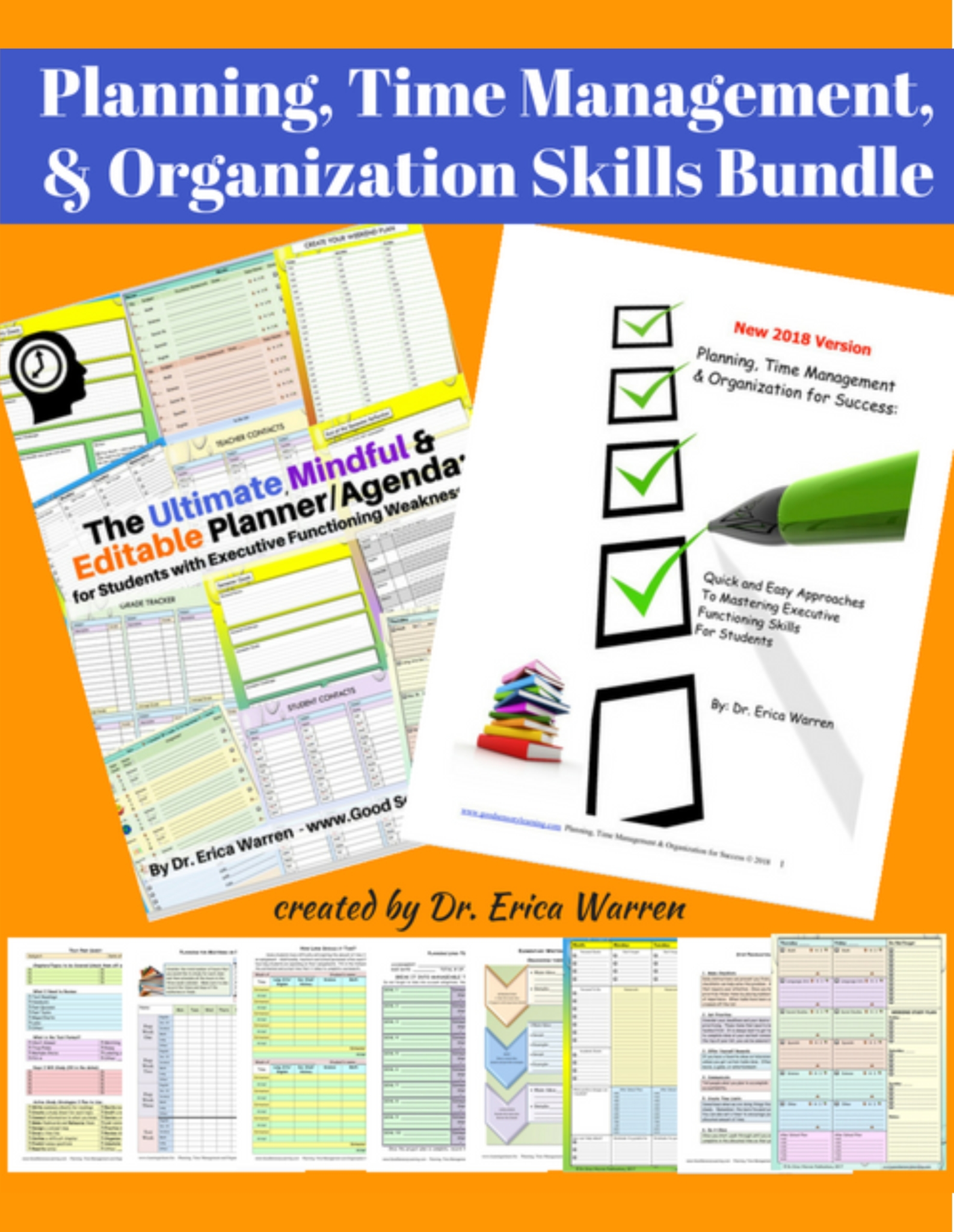
Planning, Time Management, and Organization Skills Bundle
Take mindfulness breaks.
Encourage your students to take mindfulness breaks throughout the day. This can involve anything from a few minutes of deep breathing, listening to calming music, coloring with markers/crayons, or going for a walk. Taking these breaks will help your students reduce stress and stay focused on their tasks. Reflections on how the day is going would also be an appropriate mindfulness break.
Brainstorming Time
Include brainstorming time into daily activities. This is great for teaching your students how to think critically when it comes to managing their time. Have them devise different strategies and ideas for tackling tasks or projects, and then decide which is best for the job.
Create Time Management Plans
Help your students create a plan that outlines how they will manage their time each day. This plan should involve scheduling specific times for studying, taking breaks, and other activities. This will help them stay organized and on track with their goals, and establish a daily routine.
Work on Social Skills
Time management also requires strong social skills, such as communication and collaboration. Have your students practice working together on tasks or projects to learn how to coordinate their efforts and work efficiently as a team. Sign up for team-based extracurricular activities. When they learn how to be a good team member, they will know how to work well with colleagues when they begin working after high school.
Time management activities can benefit high school students in many ways. These activities are great resources to help students develop important skills such as planning, prioritizing, and productivity, which are essential for successful time management. With the right activities and guidance from teachers, students can learn how to manage their time effectively and become more productive. They are more likely to make effective employees in the workforce with these skills as well.
RELATED POSTS ON TIME MANAGEMENT ACTIVITIES FOR HIGH SCHOOL STUDENTS
Career Planning Activities for High School Students
Brain Breaks for High School
Self Advocacy IEP Goals
How to Teach Organizational Skills to High School Students

Your Therapy Source
Email: [email protected] Phone: (800) 507-4958 Fax: (518) 308-0290

Home » The Basics » 30 Time Management Activities for High School Students
30 Time Management Activities for High School Students
May 29, 2023
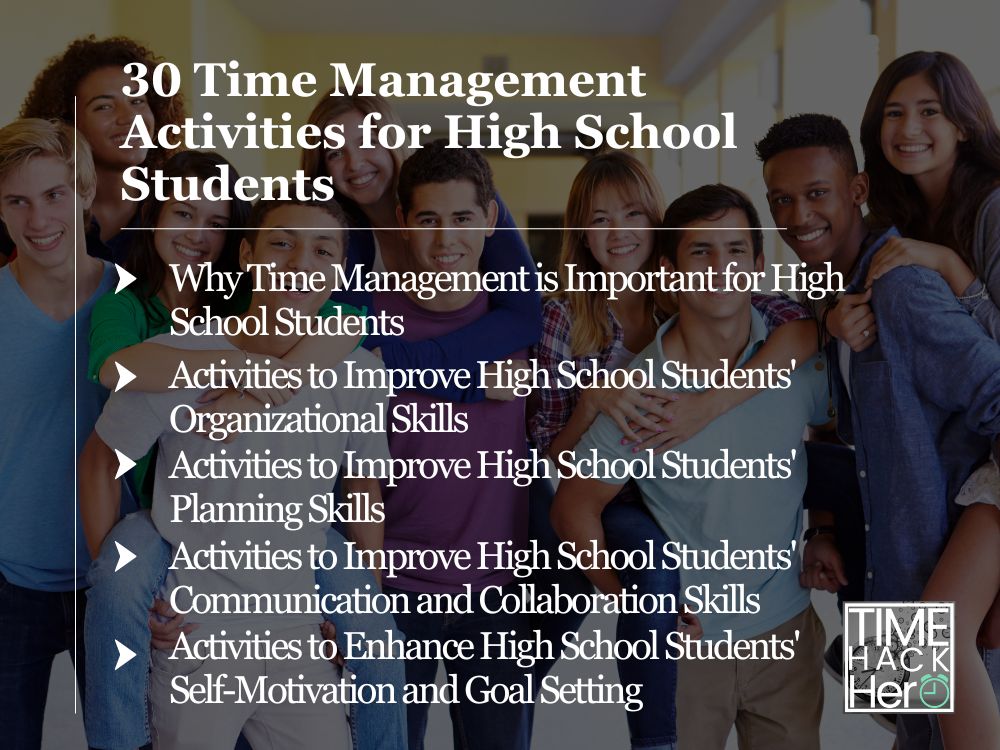
Time management is an essential skill for high school students, as it calls for juggling academic demands, extracurricular activities, and social life while attempting to stay organized and reduce stress. By implementing various time management activities and techniques, you can become more efficient and boost your productivity throughout your high school years.
To help you succeed, this article will discuss 25 time management activities specifically designed for high school students. These activities encompass various approaches, from self-reflection and prioritization to mindfulness breaks and goal-setting, all meant to enhance your ability to manage time effectively and prepare you for the challenges awaiting you in college and beyond.
By incorporating these time management activities into your daily routine, you will not only learn to allocate your time wisely but also identify distractions and potential pitfalls in your schedule. Embrace the possibilities of improving your time management skills and witness how it positively impacts your life as a high school student.
Table of Contents
Why Time Management is Important for High School Students
Effective time management is a critical skill for high school students to develop. It involves the ability to prioritize tasks, set goals, and allocate time wisely. By managing their time effectively, students can optimize their academic performance, reduce stress, and create a healthy work-life balance. Let’s explore the key reasons why time management is crucial for high school students:
Academic Success
Time management allows students to allocate dedicated time for studying, completing assignments, and preparing for exams. By organizing their study schedule and breaking down tasks, students can improve their understanding of subjects and achieve better academic results.
Reduced Stress
Effective time management helps students avoid last-minute cramming and the stress that comes with it. By planning ahead and allocating sufficient time for each task, students can reduce stress levels, stay on top of their workload, and have a sense of control over their responsibilities.
Increased Productivity
When students manage their time effectively, they can maximize their productivity. By setting goals, prioritizing tasks, and eliminating distractions, students can focus their energy and effort on activities that matter the most, leading to increased efficiency and achievement.
Development of Essential Skills
Time management nurtures important skills such as discipline, organization, and self-motivation. These skills are not only valuable in high school but also essential for success in college, careers, and personal life.
Work-Life Balance
By managing their time wisely, students can strike a balance between academics, extracurricular activities, social life, and personal pursuits. This enables them to enjoy a well-rounded high school experience and maintain their physical and mental well-being.
In conclusion, time management is a vital skill for high school students. It empowers them to excel academically, reduces stress, increases productivity, develops essential life skills, and promotes a healthy work-life balance. By honing their time management abilities, students can set themselves up for success both during their high school years and beyond.
Activities to Improve High School Students’ Organizational Skills:
1. develop personal plans and schedules:.

Assist students in creating personal plans and schedules that include dedicated study time, breaks, and extracurricular activities. By establishing personal plans and schedules, students can better manage their time, allocate their study and leisure time effectively, and enhance their organizational skills.
2. Use Notebooks or Planners:

Encourage students to use notebooks or planners to record important tasks and deadlines, ensuring they have a clear overview of their assignments and time commitments. Notebooks and planners help students stay focused, avoid missing crucial tasks, and remind them to complete tasks on time.
3. Create Clear Task Lists:
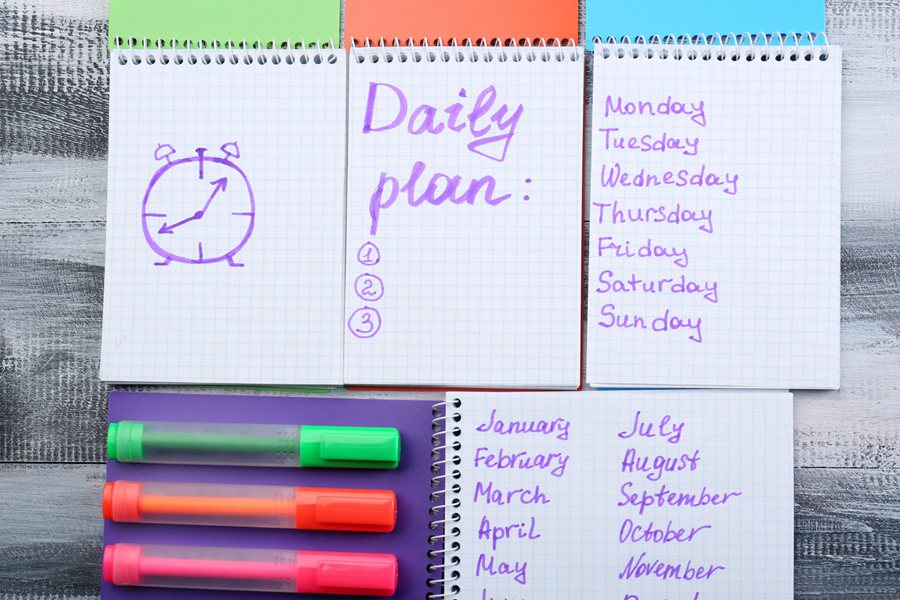
Teach students how to create clear and concise task lists, prioritizing tasks based on importance. Creating task lists enables students to organize their work, minimize omissions and confusion, and enhance their efficiency.
4. Break Down Large Projects:
Teach students how to break down large projects into smaller parts, establishing detailed steps and timelines. Breaking down projects into manageable chunks allows students to approach tasks with greater clarity and ease, reducing task-related stress and helping them maintain a sense of overall progress.
5. Maintain a Tidy Study Environment:

Instruct students on how to organize and tidy their study environment, keeping their desks clean and clutter-free. A neat and organized study environment enhances focus, reduces distractions, and fosters students’ organizational and time management skills.
Activities to Improve High School Students’ Planning Skills:
6. set short-term and long-term goals:.
Assist students in setting clear short-term and long-term goals and develop detailed plans to achieve them. By defining goals and creating plans, students can better strategize their actions, allocate time and resources effectively, and cultivate motivation to accomplish their objectives.
7. Implement Time Blocking:
Teach students to utilize time blocking to manage their schedules. Time blocking involves allocating dedicated time blocks for specific tasks or activities. Students can allocate time blocks for studying, breaks, leisure activities, and other commitments, thereby enhancing productivity and focus.
8. Set Realistic Deadlines:
Guide students in setting realistic deadlines and due dates, ensuring tasks are scheduled within appropriate timeframes. Students can learn to assess task difficulty and time requirements, enabling them to set reasonable deadlines, avoid procrastination, and improve their work efficiency.
9. Use Calendars or Reminder Apps:
Encourage students to utilize calendars or reminder apps to track important events and tasks. Students can mark important deadlines, exam dates, and activity schedules on calendars and set reminders using apps to ensure they don’t miss any crucial events or assignments.
10. Regularly Review and Adjust Plans:
Encourage students to regularly review and adjust their plans to accommodate changing needs and priorities. Students can assess their progress, evaluate their time management effectiveness, and make necessary adjustments and improvements to ensure efficient use of their time and achievement of their goals.
Activities to Improve High School Students’ Communication and Collaboration Skills:
11. participate in speech or debate competitions:.
Encourage students to participate in speech or debate competitions to enhance their oral communication skills and persuasion abilities. These activities help students practice articulating their thoughts clearly, organizing their arguments, and responding to challenges, thereby boosting their confidence and communication skills.
12. Engage in Drama or Acting Classes:
Urge students to engage in drama or acting classes to improve their body language and presentation skills. Through portraying different characters and scenarios, students learn effective ways to convey messages, express emotions, and enhance their confidence and communication abilities.
13. Read and Analyze Various Literature:
Encourage students to read and analyze different types of literature to expand their vocabulary and comprehension skills. Literature exposes students to various writing styles, enhancing their sensitivity to language and expression, and improving their reading and communication proficiencies.
14. Collaborate on Group Projects:
Assign group projects that require students to work together, fostering their teamwork and collaboration skills. By working collaboratively, students learn how to coordinate efforts, communicate effectively, delegate tasks, and accomplish goals collectively, preparing them for future work environments.
15. Practice Effective Listening:
Guide students to develop active listening skills, emphasizing the importance of paying attention, asking clarifying questions, and demonstrating empathy. Effective listening enhances understanding, promotes effective communication, and cultivates stronger interpersonal relationships.
Activities to Enhance High School Students’ Self-Motivation and Goal Setting:
16. encourage self-reflection:.
Promote self-reflection activities where students can assess their strengths, weaknesses, and areas for improvement. Self-reflection helps students gain self-awareness, set meaningful goals, and develop strategies to achieve them, fostering self-motivation and personal growth.
17. Provide Opportunities for Choice:
Offer students choices within assignments or projects to promote autonomy and personal investment. By allowing students to select topics, approaches, or presentation methods, they feel a sense of ownership, increasing their motivation and engagement in the task.
18. Celebrate Milestones and Achievements:
Recognize and celebrate students’ milestones and achievements to reinforce their self-motivation and goal-setting behaviors. Acknowledging their progress, effort, and accomplishments boosts their confidence, encourages continued growth, and sustains their motivation for future endeavors.
19. Foster a Growth Mindset:
Promote the idea of a growth mindset among students, emphasizing that abilities and intelligence can be developed through dedication and effort. By cultivating a belief in their potential for growth and improvement, students become more resilient, motivated, and committed to setting and achieving challenging goals.

20. Provide Meaningful Feedback:
Offer constructive and specific feedback to students, highlighting their strengths and areas for improvement. Effective feedback helps students understand their progress, identify areas where they can enhance their skills, and stay motivated in their pursuit of goals.
Activities to Improve High School Students’ Prioritization and Decision-Making Skills:
21. teach prioritization techniques:.
Introduce students to different prioritization techniques, such as the Eisenhower Matrix or ABC method, to help them effectively prioritize tasks based on importance and urgency. These techniques assist students in making informed decisions about how to allocate their time and resources.
22. Analyze Consequences:
Encourage students to analyze the potential consequences of their actions and decisions. By considering the short-term and long-term outcomes, students develop critical thinking skills and make informed choices that align with their goals and priorities.
23. Explore Time Management Apps and Tools:
Introduce students to various time management apps and tools available, such as digital planners, task management apps, or Pomodoro timers. These tools can assist students in organizing their tasks, setting reminders, tracking progress, and improving their overall time management skills.
24. Conduct Mock Interviews:
Organize mock interview sessions where students can practice their communication and decision-making skills in a professional setting. By simulating real-life interview scenarios, students learn how to think on their feet, respond effectively to questions, and make confident decisions under pressure.
25. Engage in Role-Playing Activities:
Arrange role-playing activities that require students to take on different roles and make decisions based on specific scenarios. Role-playing exercises develop critical thinking, problem-solving, and decision-making abilities, as students learn to analyze situations, consider alternatives, and make informed choices.
26. Prioritize Extracurricular Involvement:
Encourage students to participate in extracurricular activities that align with their interests and goals. Engaging in extracurricular pursuits helps students develop time management skills by balancing their academic responsibilities with other commitments, enabling them to prioritize and make decisions about how to allocate their time effectively.
27. Practice Mindfulness and Stress Management:
Teach students mindfulness and stress management techniques to help them stay focused, make clear decisions, and maintain a balanced approach to their tasks. Mindfulness exercises, such as deep breathing or meditation, can improve students’ self-awareness, reduce stress levels, and enhance their decision-making abilities.
28. Engage in Real-World Problem Solving:
Provide opportunities for students to tackle real-world problems or challenges that require critical thinking and decision-making skills. By solving authentic problems, students develop their ability to assess situations, evaluate options, and make effective decisions based on available information and resources.
29. Foster Time Awareness:
Encourage students to develop a sense of time awareness by using timers or setting deadlines for tasks. This practice helps students understand the value of time, become more conscious of their progress, and make timely decisions to accomplish their goals.
30. Reflect on Decision Outcomes:
Encourage students to reflect on the outcomes of their decisions, both positive and negative, to gain insights into their decision-making processes. Reflective exercises help students learn from their experiences, understand the impact of their choices, and refine their decision-making skills for future endeavors.
In conclusion, time management is a critical skill for high school students to develop. By effectively managing their time, students can experience numerous benefits. Firstly, it allows them to increase their productivity. With proper time management techniques, students can allocate dedicated time for studying, completing assignments, and engaging in extracurricular activities. This structured approach helps them make the most of their available time and accomplish tasks efficiently.
How useful was this post?
Click on a star to rate it!
Average rating 2.9 / 5. Vote count: 16
No votes so far! Be the first to rate this post.
Trending on Time Hack Hero

Feeling sluggish and sleepy after eating a meal rich in…

Effective communication is an essential life skill. The way we…

Forming a new habit or breaking an old one is…

Time management is a crucial skill for college students that…

Time management is an essential skill in today’s fast-paced world,…

Time management is a skill that allows you to prioritize…

Managing a project can be a challenging task, but with…

In today’s fast-paced world, efficiently managing your time is crucial…
- Grades 6-12
- School Leaders
Only 100 Left! Get FREE Timeline Posters Sent Right to Your School ✨
20 Effective Time Management Strategies and Tools for Students
Teachers can use these too!
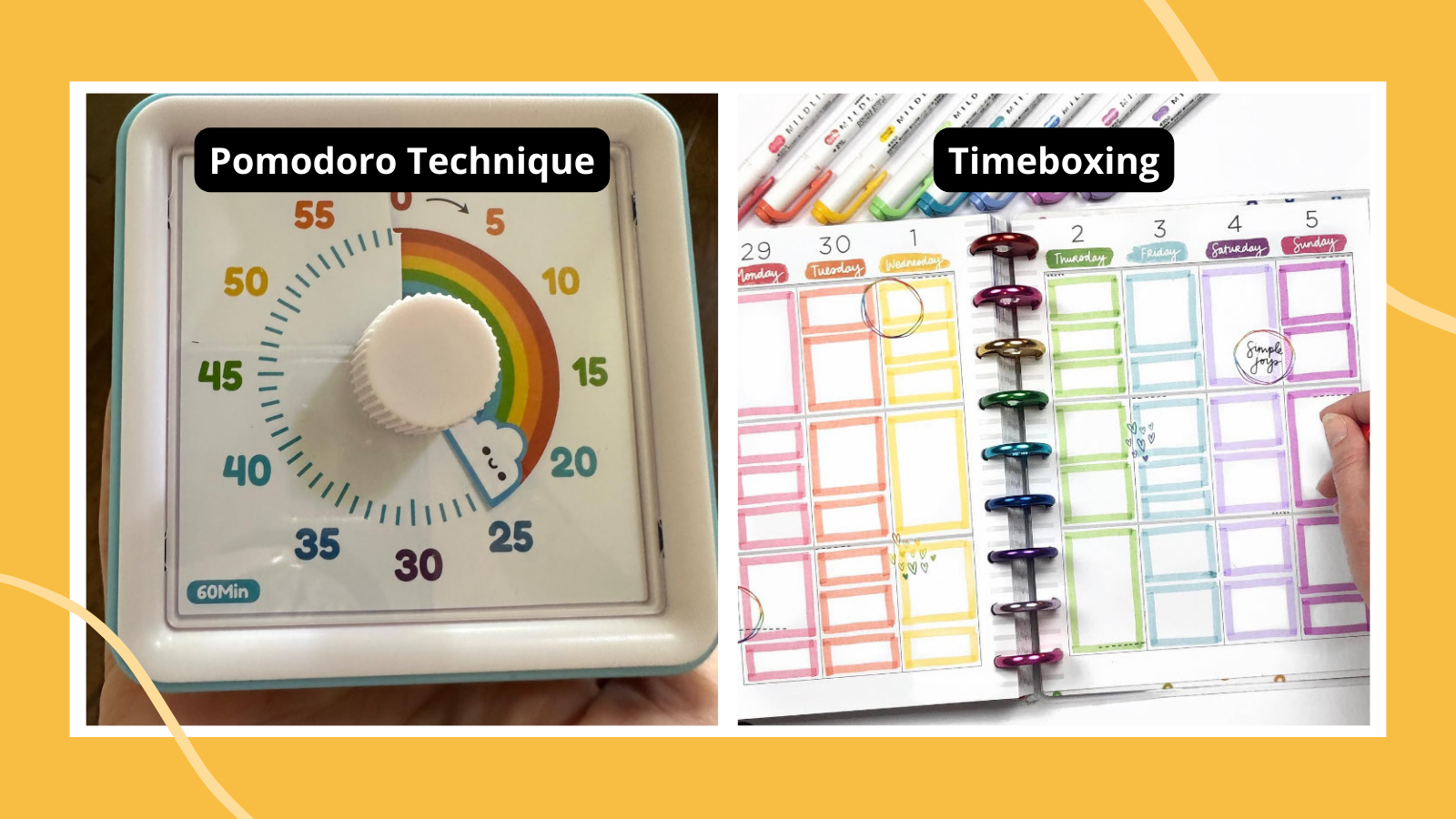
One of the most important life skills for anyone to master is time management. Keeping track of everything that we have to do and carving out the time to get it all done can be a real struggle. Try these time management strategies and techniques, plus find helpful tools for staying on track.
General Time Management Strategies
Time management techniques, time management tools.
These time management strategies work for everyone, helping you set goals and prioritize, then set a schedule to get things done.
Visualize the big picture
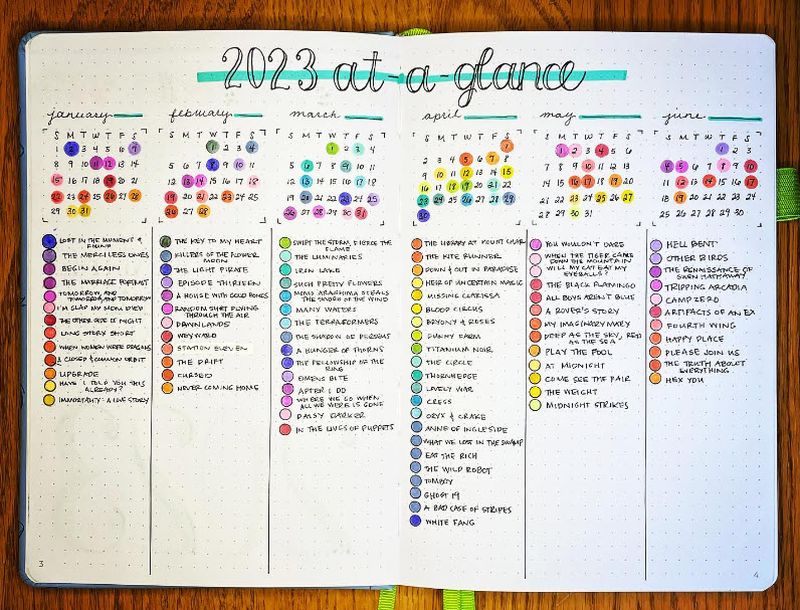
Use a calendar of some type to lay out all your big-picture goals for a year, month, or week. Include major projects and assignments, as well as school and personal events. This is your place to get an overview of everything that’s on your plate. Keep items to broad descriptions: “History Project” or “Spring Play Opening Night.” You’ll get into the details next.
Break it down
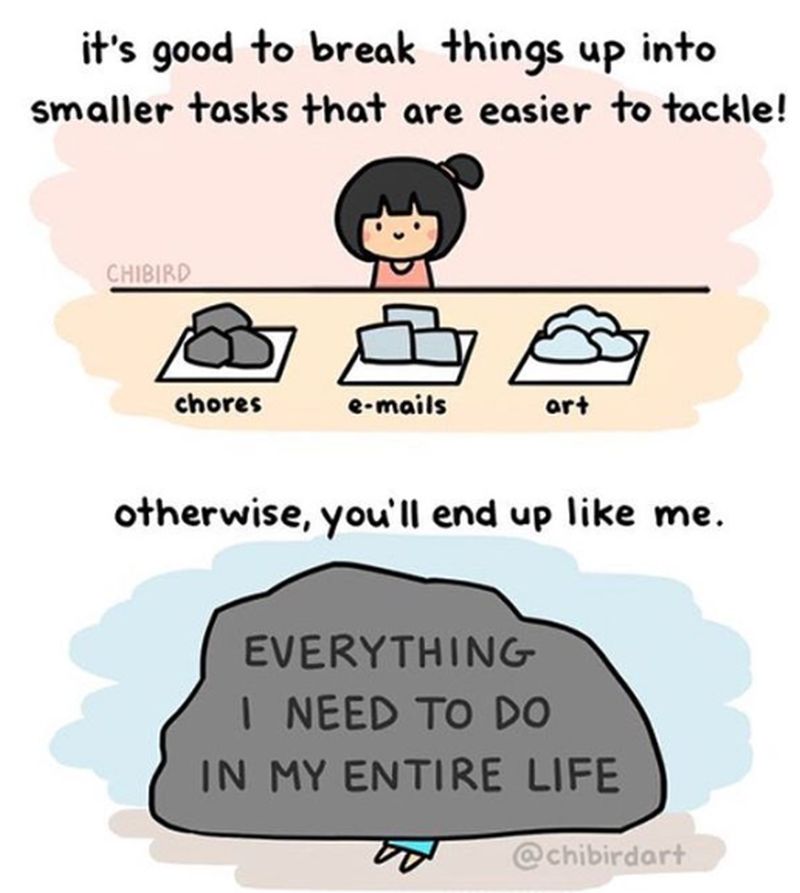
The next step is to take major projects and assignments and break them down into smaller, more manageable parts. This is an incredibly effective way to overcome that feeling of “I’ll never get this all done!” It also prevents procrastinating on an entire project until the very last minute. Set smaller, more manageable goals with their own due dates in advance of a complete project or event.
For example, imagine your big-picture calendar says “History Project Due Feb. 23.” Breaking that down could look like this:
- Choose topic and presentation method: Jan. 9
- Initial research: Jan. 10-30
- Presentation outline: Jan. 31
- Write presentation script: Feb. 1-5
- Create visual aids: Feb. 6-12
- Rehearse presentation: Feb. 13
- Fine-tune presentation: Feb 14-16
- Final rehearsals: Feb. 17
- Give history presentation: Feb. 23
At first, this method might feel a little overwhelming, because it may make you feel like there’s too much to get done. But as you use it, you’ll see how it can actually make you feel more prepared and in control, and make your time easier to manage.
Determine priorities
Sometimes it’s simply true: You don’t have enough time in a day to get all the things done that you’d like to. That’s where setting priorities becomes vital. In the “Time Management Techniques” section below, you’ll find several different ideas for determining the priority of different items on your lists.
Once you’ve figured out which items are the most important, try a color-coding system to indicate which items get a higher priority. This will help you identify at a glance what you need to do now and what can wait until another day.
Make daily to-do lists
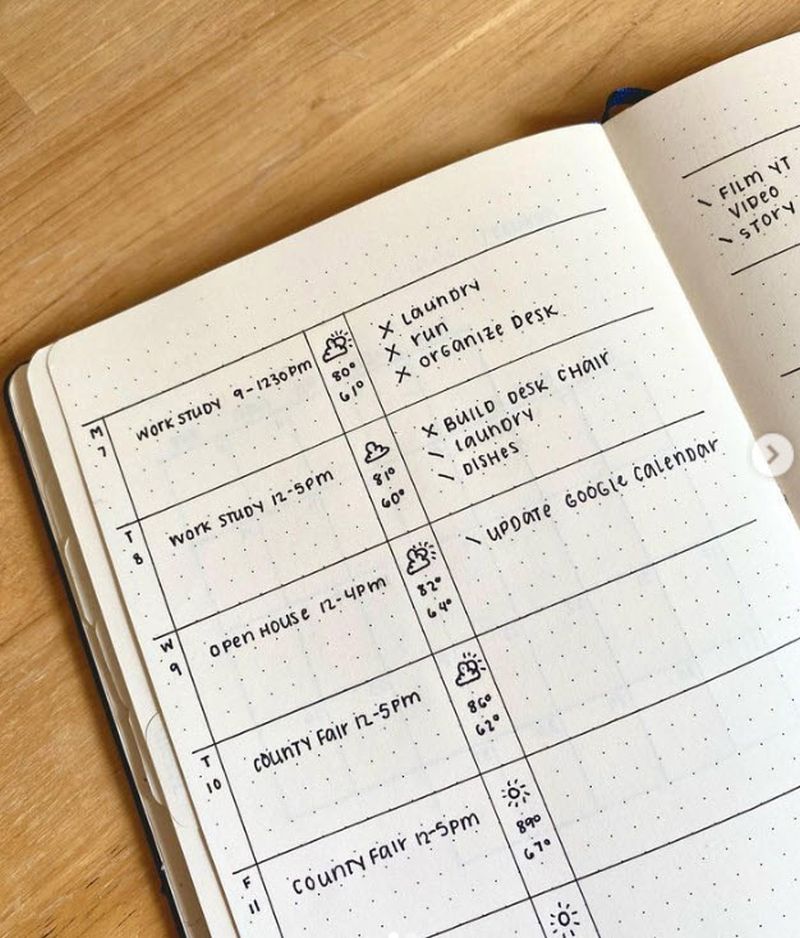
Make it a habit to start each day by creating a to-do list. (Not a morning person? You can do this the night before too.) Include high-priority items, as well as things you’d like to do but may not have to complete. Throughout the day, as you complete an item, revisit your list and check it off. It’s incredibly satisfying to cross things off, and checking in with your list a few times a day ensures you don’t forget important things. ADVERTISEMENT
Limit multitasking
Today’s world places a lot of value on multitasking (doing several things at once). But when you’re doing multiple things at the same time, you’re probably not doing any of them well. So keep your multitasking to a minimum. When it’s time to work on something, set your focus to that particular thing. Other stuff can wait.
But some multitasking is OK. For instance, you might throw your clothes in the washing machine, then work on your math homework while waiting for them to be ready for the dryer. Later on, you could fold and put away the laundry while practicing conjugating Spanish verbs out loud. This type of multitasking works because the physical tasks are ones that don’t require much concentration, leaving your brain free for academic subjects.
On the other hand, avoid something like trying to listen to a podcast for your history class while also doing your math homework. Your attention won’t be fully on each, and your learning will suffer.
Remove distractions
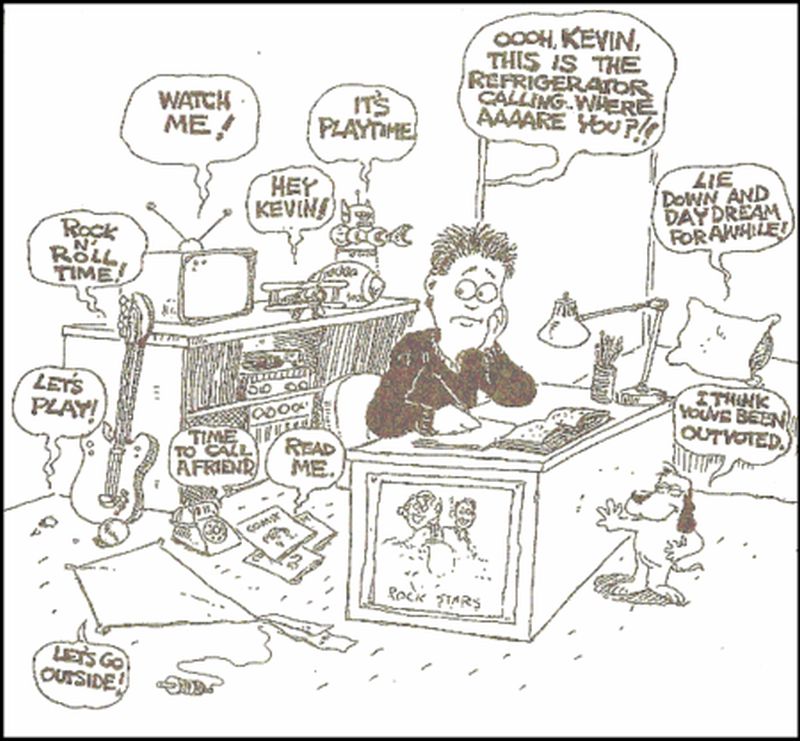
Some people are capable of deep focus no matter what’s going on around them. Most of us, though, need to find ways to remove distractions when it’s time to get down to work. Here are some examples to try:
- Turn off your phone, or set it to alert you only in case of emergencies.
- Wear noise-cancelling headphones or earplugs to block out distracting sounds. A white-noise machine or app can help with this too.
- Close miscellaneous tabs in your web browser (like social media or news sites), and use only the tabs you need for your work.
- Go into a quiet room and shut the door. Ask friends and family not to disturb you.
- Check your to-do list before you start to make sure you’re on track. Then, clear your mind of other projects or tasks, and focus on what’s at hand.
Do an end-of-day review
At the end of each day, sit down with your to-do list. Was there anything you didn’t get to? Move it to another day. Did you feel too rushed today? Think about how you might make tomorrow run a bit more smoothly. Where do you stand in terms of your big-picture goals? Take a few minutes to adjust any plans accordingly.
Try a time audit
It’s OK if you don’t get to everything on your list every day. But if you find that there’s never enough time to get things done, you might benefit from a time audit. Over the period of a week or two, write down exactly how you spend your time, hour by hour. Then, look it over and see if you can identify problem areas. You might need to cut down on some optional activities and give that time to high-priority items instead. Learn how to do a time audit here.
The time management strategies we’ve talked about so far are general ways to stay on track and get stuff done. But there are multiple ways to approach some of these strategies, especially when it comes to actually settling down to work. Check out these popular time management techniques and choose one or more that seem right for you.
Eisenhower Decision Matrix
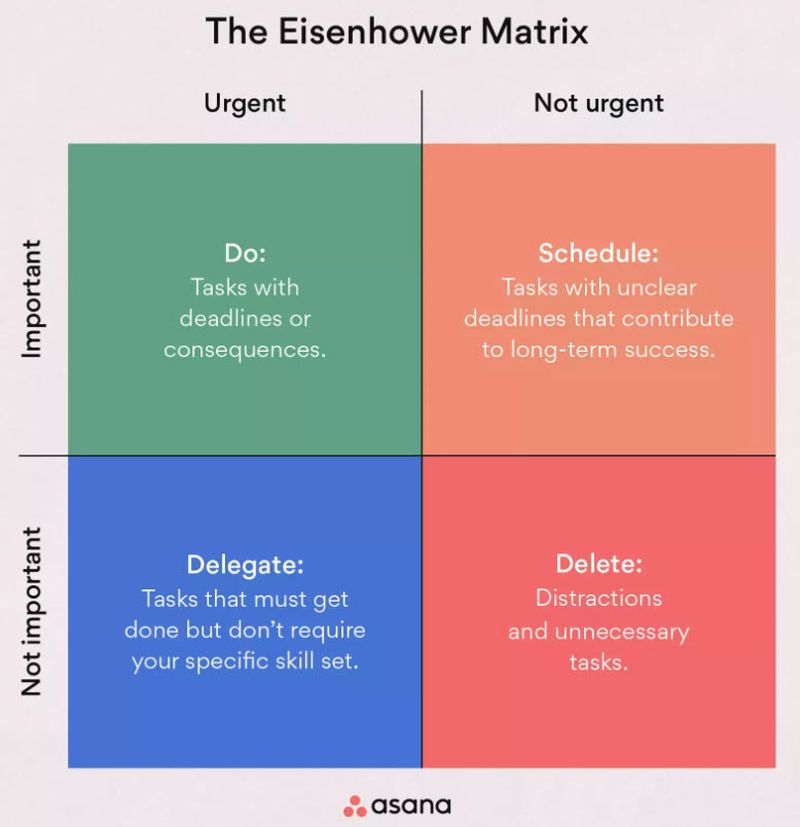
President Eisenhower developed this matrix and used it to help him prioritize his tasks. He looked at each item to evaluate it by importance and urgency, then broke them into four categories:
- Do First: These are urgent, important tasks with high priority.
- Schedule: These are important tasks that aren’t quite as urgent.
- Delegate: You may be able to delegate less important but still urgent tasks to someone else.
- Don’t Do: These non-urgent, unimportant items can be eliminated entirely or postponed indefinitely.
Here are some possible student examples for each category:
- Do First: Homework that’s due tomorrow takes top priority, as might doing laundry if you’re out of clean clothes.
- Schedule: Set aside time (see Time Blocking) for smaller parts of long-term projects, such as research time or writing an outline. That could be today or one day in the near future.
- Delegate: Students aren’t always able to delegate their tasks, but they can ask for help. For example, if your schedule is incredibly tight, you could ask your dad if he’d be willing to throw your clothes in the dryer when the washer is done.
- Don’t Do: These are often bad habits you need to break, like surfing the web aimlessly instead of working, or texting your friends for hours instead of doing your chores.
Find out much more about the Eisenhower Matrix and how to use it for time management strategies here.
ABCDE Method
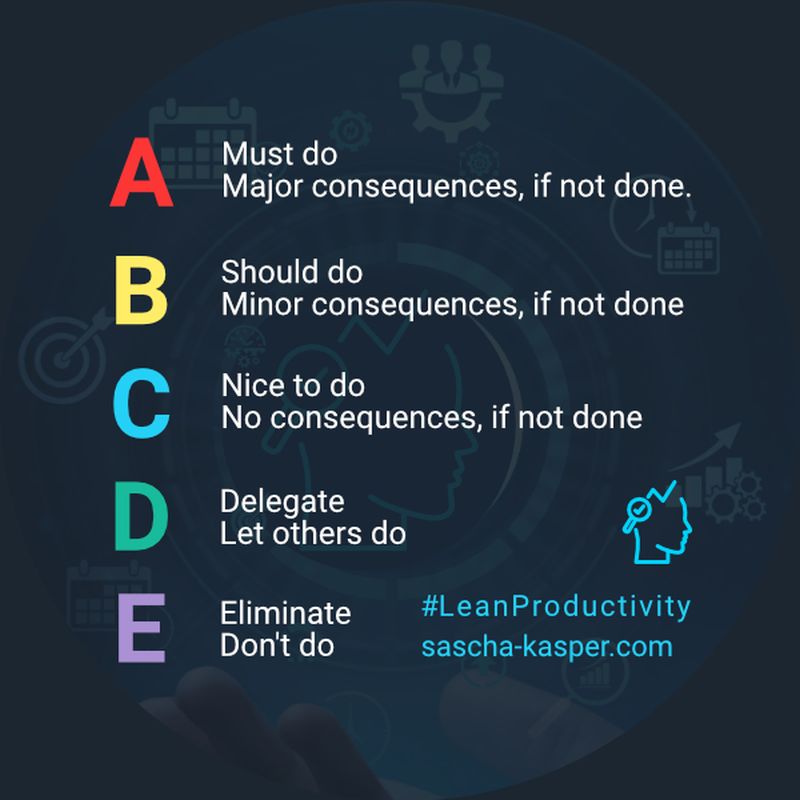
This is another time management strategy for prioritizing the tasks at hand. Assign each item a letter:
- A: Highest priority
- B: Should do soon, if not today
- C: Could do, but no serious consequences if not done
- D: Delegate or ask for help
- E: Eliminate from your list
This is very similar to the Eisenhower Matrix, with a little more flexibility around should-dos and could-dos. Learn more about the ABCDE method here.
Most Difficult First (Eat That Frog)

This method is based on a quote often attributed to Mark Twain: “If it’s your job to eat a frog, it’s best to do it first thing in the morning. And If it’s your job to eat two frogs, it’s best to eat the biggest one first.”
In other words, don’t put off the biggest, hardest tasks. Get them out of the way first. Then, everything else you have to do will seem easy in comparison.
For some people, though, this concept can be counterproductive. If you’re already feeling overwhelmed, tackling something extremely difficult can be too much and cause you to shut down entirely. In that case, it’s just fine to choose smaller, simpler items. The key is to make progress, one step at a time.
Pomodoro Technique
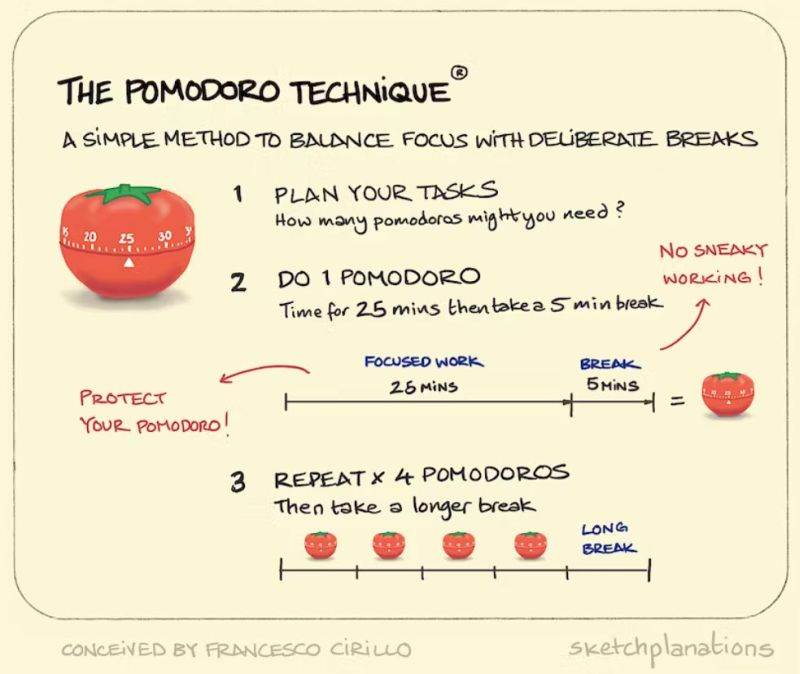
The Pomodoro Technique is a simple time management method: You work for 25 minutes at a time, then take a 5-minute break to rest and recharge. Simply set a timer for 25 minutes, and focus on one single task until it goes off. Then, you can spend 5 minutes stretching, resting your eyes, or checking your social media feeds. When the 5 minutes are up, set the timer for another 25 minutes, and get back to work. If you do four 25-minute sessions in a row, take a longer break afterwards. Learn more about the Pomodoro Technique here.
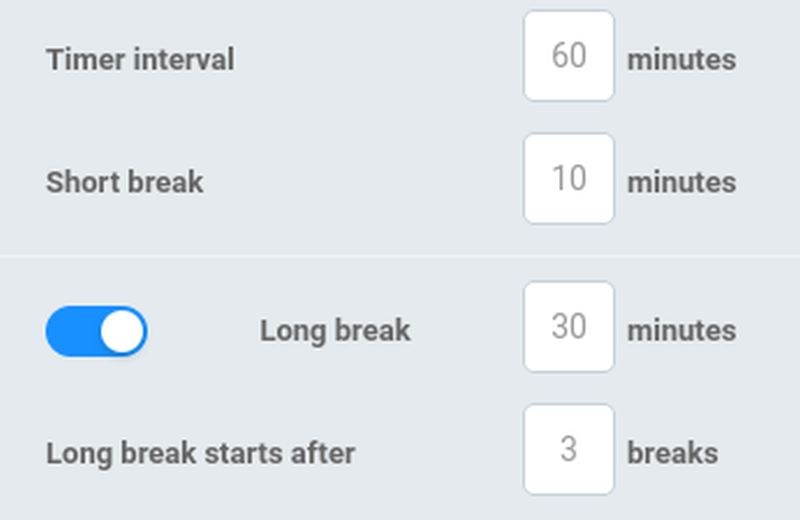
If 25 minutes seems too short and you’d like a little more uninterrupted time, try Flowtime instead. This stretches out both the work and break time proportionally. If you work for 25-50 minutes, take an 8-minute break. For 50-90 minutes, you get a 10-minute break. And if you’ve been at it for more than 90 minutes, take 15 minutes to recharge. Learn about Flowtime here.
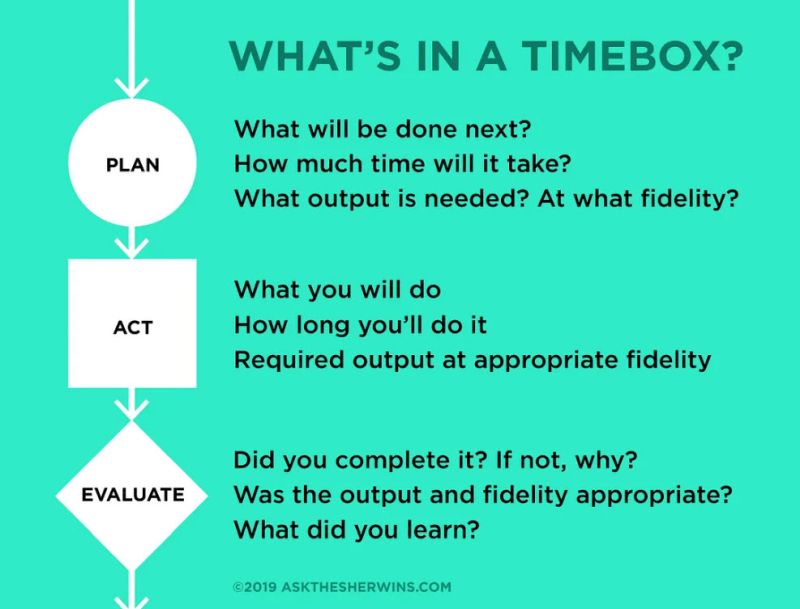
Parkinson’s Law says that work will always expand to fill the amount of time available. Timeboxing seeks to shrink tasks back to the size they truly need to be. When you timebox, you set a specific amount of time for a task and complete it within that time.
In other words, you might look over your study planner and decide that you need one hour for tonight’s geometry and chemistry assignments, plus you’d like to spend another hour working on your English essay.
Set a timer and work on your geometry and chemistry for an hour, with no other distractions. When the timer goes off, reassess and adjust your goals as needed. Since you have to finish that homework tonight, you’ll probably need to add more time if you’re not finished.
Your English essay isn’t due for two weeks, though, so if you’ve boxed out one hour for working on it today, that’s all you need to do. Set a timer, determine your goals for day, and get to work. When the timer goes off, you’re done for today.
Here’s more on timeboxing.
Time Blocking
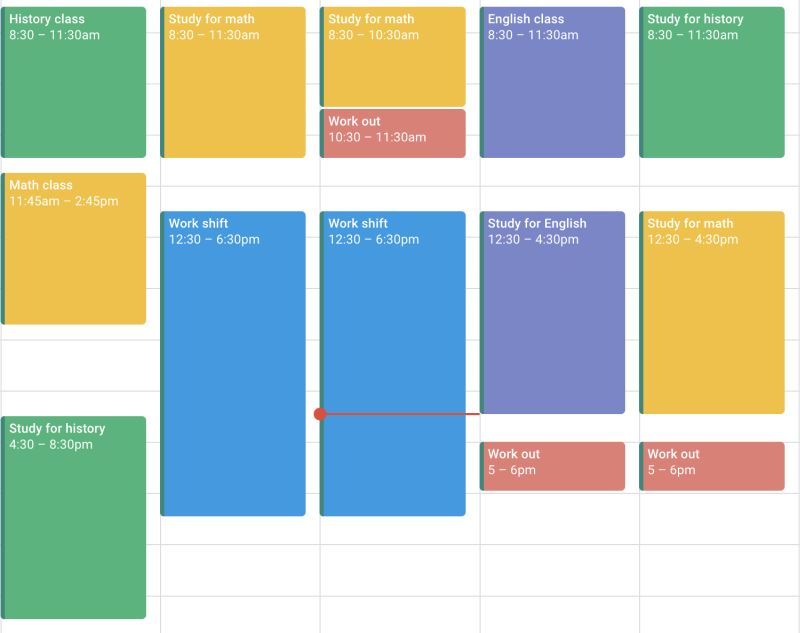
This method is similar to timeboxing, but it involves setting blocks of time aside on your calendar for specific tasks. For example, you might block out 4 p.m. to 5 p.m. each day for daily homework, 5 p.m. to 6 p.m. for working on your biology research paper, and 7 p.m. to 7:30 p.m. for piano practice. Some people like to start each day by blocking time out on their calendar, figuring out how they’ll make the most of their time. Find out more about time blocking here.
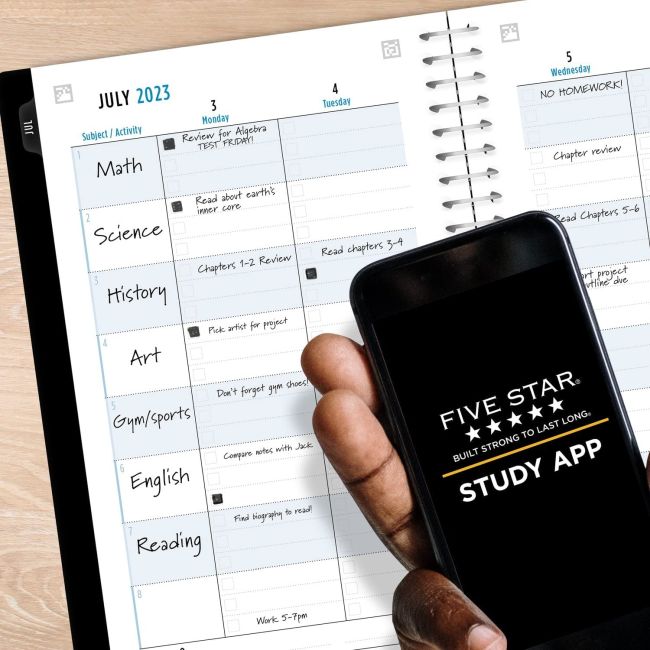
Once you’ve selected some time management strategies to try, you’ll find plenty of tools to help make them work. Check out these top time management tools for students, from planners to timers and beyond.
Student Planners
Traditional paper planners come in a variety of styles, with some made especially for students. The most important thing is to choose one you’ll actually use, and keep it on hand at all times. See our selection of the top student planners here.
Planner Apps
Planner apps and online calendars are nice because you have access to them everywhere you go. For students, we really like:
- My Study Life
See more details on each of these here, plus more options.
Study Planners
Study planners are specific to academics, and they are a simple way to keep track of both short-term and long-term assignments, projects, and more. Check out these free printable options:
- Develop Good Habits: Study Planner
- Alex Marie: Weekly Assignments Due
- Sophia Lee: Homework Planner Pack
Time Management Apps
Planner apps are a good start, but other time management apps can help you stay on track by eliminating distractions or setting time limits. Here are a few to try:
- Pomofocus : A free online 25–5 timer with the ability to add a task list for each work segment
- Rize : An AI productivity coach that uses time tracking to improve your focus and build better work habits
- Forest : Eliminate distractions, stay on task, and grow a digital forest to celebrate your achievements
Bullet Journal
Bullet journaling has a lot of benefits, and some page setups are especially good for time management:
- Daily Schedule
- Project Planner
- Study Tracker
Check out our big roundup of bullet journal ideas here.
What time management strategies do your students find most effective? Come share your thoughts and ask for advice in the We Are Teachers HELPLINE group on Facebook .
Plus, ultimate study skills guide: tips, tricks, and strategies for every grade ..
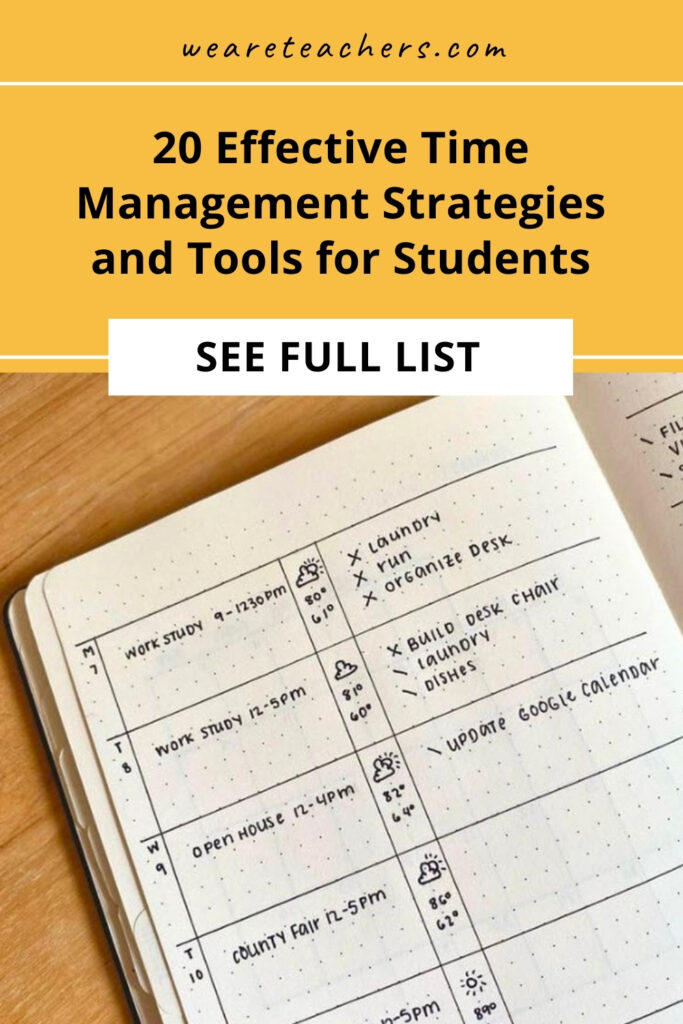
You Might Also Like
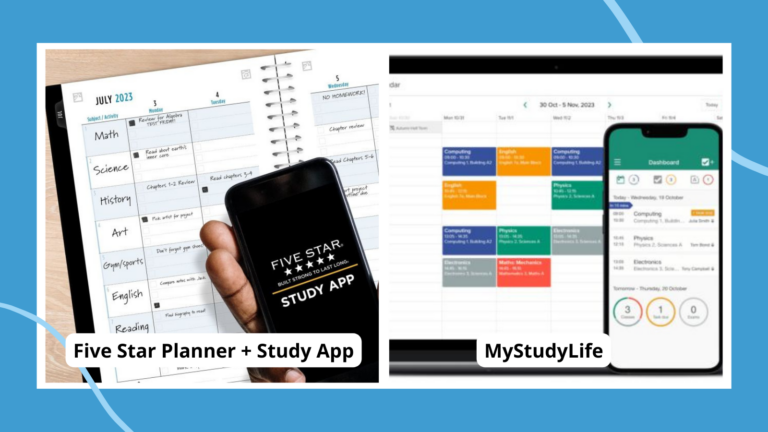
16 Best Academic Planners for Students in 2023 (Paper and Online Options!)
Help them plan for success all year long. Continue Reading
Copyright © 2024. All rights reserved. 5335 Gate Parkway, Jacksonville, FL 32256
Discover these eight time-management tips for high school students.
Eight ways to take control of your time, 1. make a to-do list every day.
Put the most important tasks at the top, even if they're things you dread, and tackle them first. Don’t forget to list things you want to do so you have items to look forward to. Try motivating yourself with a reward if you complete everything on your list.
2. Keep your work with you
This way, you can get something done if you have extra time, such as while you're on the bus or waiting for an appointment.
3. Don't be afraid to say no
It's OK to say “no” if a friend asks you to go to a movie one night, but you have a test the next morning. Instead, find a time that works for both of you to see the movie.
4. Find your productive time
Are you a morning person or a night person? You'll be more efficient if you work when you're at your best.
5. Create a dedicated study time
One of the most important time management tips for high school students is to set up a time devoted only to studying or homework. Shut off your phone. Respond to calls or texts only when your work is finished. Texting or engaging online during this time is distracting.
6. Budget your time
Figure out how much time you usually spend on your activities. Then create a weekly schedule to follow. Determine how much free time you have before you add any commitments. And remember to schedule time to relax.
7. Don't get sidetracked
If you find that you're wasting time on unimportant things, you need to stop, check your to-do list, and get back to what's at the top. You may be procrastinating because you need to figure out how to move forward on a school project. If that's the problem, check with your teacher to clear things up so you can get moving.
8. Get a good night's sleep
Your brain needs rest to perform at its peak. If it's time to sleep, put the things you still need to accomplish on the next day's to-do list, and go to bed.
For tips on how to tackle homework efficiently, read Take Control of Homework.
Can I learn how to manage my time as a student?
Yes. You can follow many different strategies for time management. If you want to manage time effectively as a student, plan ahead, prioritize tasks, and avoid procrastination. Eliminating distractions and taking regular breaks are also beneficial. These habits will help you achieve academic success.
What are some consequences of poor time management for high school students?
Poor time management can have many consequences for high school students. Not following time management strategies in high school can negatively affect your academic performance, mental health, productivity, and physical health.
How can I balance academic work and extracurricular activities?
As you already know, time management for high schoolers is essential. When you add extracurricular activities, you may have to change your schedule. You may need to reduce the time you’ve blocked out for social activities and relaxing to accommodate your new activity.
Find the right college for you
Related articles.
10 Time Management Tips for High School Students
- by Daniel Friedman
- 8 minute read

These 10 time management tips for high school students will help you organize your life while making high school feel like a breeze!
Time. The finite resource. The phenomenon that we all share in common.
It’s what motivates humans to do what they can on this Earth while they’re still here, and knowing how to manage your time as a student is the only way to maximize your efficiency.
I bet you didn’t think about it this way, but Bill Gates shares the same 24 hours as a 3 year-old girl.
What you choose to do with that amount of time everyday will ultimately define who you are as a person.
While we’re in school, time is not always in our control. We have to work around classes, deadlines, and be able to fit that in with all of our daily hobbies.
Not to mention learning how to juggle school and work!
First, let’s talk about why you need to manage your time in the first place…
Why Do I Need to Manage My Time as a Student?
Time management allows you to complete everything that you need to get done within a certain period. It will help you organize your life which can be quite difficult during school.
Once you start managing your time, you will notice better grades, higher productivity, and ultimately a better mood !
For all my lazy students out there who finally want to get out of bed and not watch Netflix all day, you need these tips! The change will feel amazing once you get used to it and you won’t want to go back to it ever again.
Things get busy during high school, I get it. Which is why I want you to implement these time management strategies and give yourself more time to do the things you love.
Let’s start one of the most important time management tips for high school students…
Have a Schedule
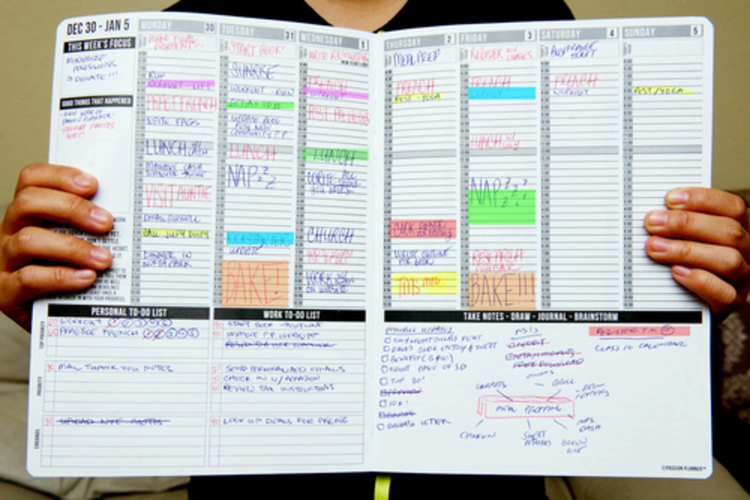
I’m sure you saw this one coming, but it’s essential!
Having a schedule where you can input your to-do list into specific time slots will be the easiest way to keep track of everything.
Planners with monthly, weekly, and daily pages are extremely useful for tracking priorities (which will be discussed soon).
If you need a good planner , I highly recommend this one for all of your time management needs.
Following your schedule religiously is the most important aspect of balancing school and your personal life.
Get in the habit of writing notes, random thoughts, and ideas that you have as you go about your day into the planner as well.
You should treat it as your second brain, so that way you don’t have to clutter everything in your real one!
Prioritize Your To-Do List
Having your to-do list written down is a great start, but prioritizing it is even more valuable. Here’s how to do it:
- Go through what you have to do for the day
- Group similar tasks together (time it takes to complete, similar subject, etc.)
- Number the tasks in the order that you want to complete them
- Start with an easier task for the beginning of every day (this helps reduce feeling overwhelmed and jump start your productivity)
I used to get a feeling of discouragement when I knew there was a lot to complete the next day, even when I had my to-do list written down. However, now that I prioritize the list, I don’t get that feeling anymore.
If you get that same feeling, then you might just be missing out on prioritizing your time. Give it a try!
Have Long Term and Short Term Goals
Having long term and short term goals will help you complete tasks faster and more efficiently.
Long term goals should be anywhere from 1 week to 1 semester. Short term goals should be within the time frame of 1 week, but usually 1-2 days.
When you manage your time this way, things start to become more clear. You’ll know exactly what you have to get done and the amount of time that you have to do it.
Once you have your long term goals, all you have to do is divide them up into weekly, daily, or even hourly tasks.
Those tasks are now your short term goals. If you finish tasks early, take on a little task here and there to finish everything before you’re supposed to.
Related Post: 10 College Dorm Essentials Every Student Needs
Reward Yourself
Giving yourself some sort of incentive is a great motivator to keep at your goals.
Humans are naturally wired to do better at tasks that incentivize reward. Which is why we study hard for A’s, train hard for gold medals, and work hard to increase salary.
When it comes to time management tips for students, these rewards can be simple things like giving yourself a piece of candy when you’ve completed your tasks for the day.
Get in the Habit of Using Reminders
Although I don’t advise using technology to plan out your day, reminders on your phone can be a stress-free way to manage your time.
You should still have your goals written out in a planner , but reminders can help you remember when it’s time to complete them.
For example, if you don’t have your planner with you and you just got out of class, your phone can remind you to write down the homework you were assigned or to get studying for a test.
Reminders are essentially your back up planner for things that you may forget at times.
Avoid Distractions When Studying
This is probably one of the hardest time management tips for high school students to get down.
We love distractions. We love procrastination when we don’t want to do the hard work.
Here’s what I recommend you start doing now…
- Turn your phone off for tasks that take longer than 30 minutes
- Put your computer on full screen to avoid opening other tabs
- Only listen to music that is designed for focus (songs without lyrics)
- Study on a full stomach and have water next to you
Write the 4 bullet points above on a piece of paper and stick it on your wall in front of your desk so you never forget!
We get distracted by every little thing that we can, so cut them out for good when you’re studying.
Related Post: 10 Studying Hacks for Effective Students
How to Make Your Studying Time More Effective
There is a special formula that was created for the most efficient studying technique. I only use this method now and boy does it work well!
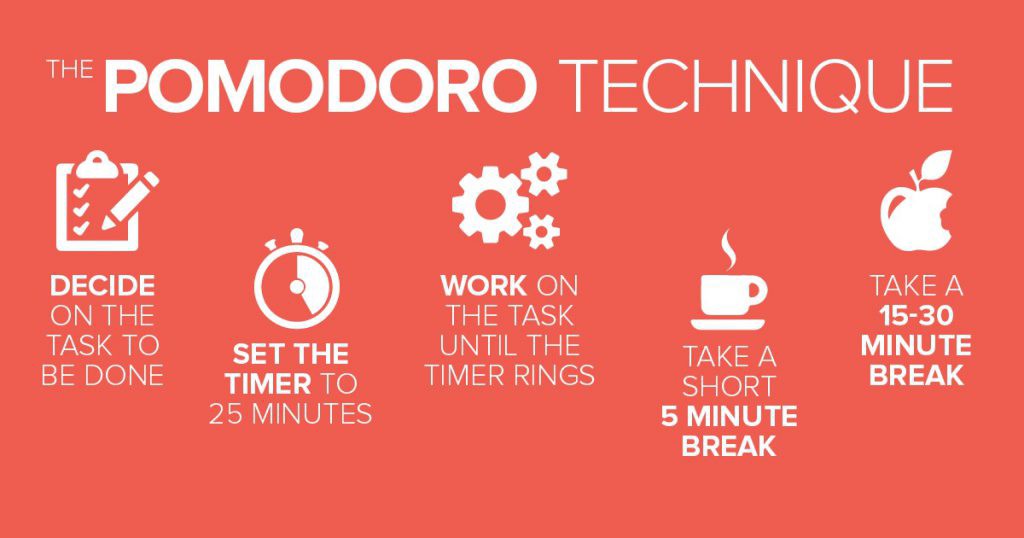
It’s called the Pomodoro Technique and here’s how it works:
- Work for 25 minutes
- Take a 5 minute break
- Repeat 4 times
- After the 4th cycle, take a longer 30 minute break
The amount of memory retention you get from this method is insane and will ultimately save you time in the long run!
I recommend setting a timer for the 25 minute cycles just so you stay on track. Avoid using your phone during the breaks and instead, go grab water or a snack.
Combining this technique with tip #4 can help you stay motivated and continue to study hard.
Multitasking Will Ruin Results
I can’t speak for everyone on this, because some people can make it work. However, if you are thinking about multitasking, I would advise against it.
Getting multiple things done during the same period of time statistically doesn’t make sense if you want to be 100% efficient.
If you work on 2 things at once, it’s almost impossible to put your full effort into both.
Plus, all the other time management tips for high school students are enough to avoid having to multitask in the first place. Take advantage of the other tips to make high school easier on you.
Minimize Deadlines
There is a theory about minimizing deadlines which summarizes that we give ourselves too much time to complete tasks , and in turn it ruins our efficiency.
For Example: If you have an essay to write that is due in 3 week, minimize that deadline to 1 week. On top of that, when you actually start the essay, give yourself 3 hours instead of the whole day to write it.
For some reason, we are able to complete tasks faster than we think! This can be a useful asset to keep in mind when you feel like your schedule is extra busy.
The 2-Minute Rule
Similar to minimizing deadlines, we tend to leave the easiest tasks for last.
These tasks can include washing a bowl after eating from it, doing laundry, writing something down, sending a teacher an email, etc.
Here’s what the 2-minute rule suggests…
If it takes 2 minutes or less to do something, do it right away.
This may be difficult for you at first, but from someone who always does this now, I can say that I feel so much more organized. Following this rule has changed my time management tremendously (and for the better)!
Related Post: 7 High School Hacks to Get Your Through Class
How to Organize Time Spent on Each Class
The best way to organize your time is by following these steps:
- Make a syllabus outline with all of the dates of major deadlines for the semester
- Color code the outline (use a different color for every class)
- Use the above time management tips on prioritization to order the importance of the tasks
- Split your time according to when tasks are due and how long it takes to do them
Everybody will have a different way to do this. This method is simply what has worked for my friends and I.
The most important thing to keep in mind for this is your syllabus due dates. That’s your main focus for splitting up the time properly.
How to Start Managing Your Time Today
It will be hard for you to start implementing these tips if you say you’ll do it later.
Now is not the time (no pun intended) to wait for your schedule to magically appear in front of you. Here’s what you can do right this second:
- Make a list of your deadlines for the semester
- Get yourself a planner on amazon
- Write out your personal goals (long and short term)
- Make your schedule for tomorrow
- Set reminders to start working on those tasks
- Keep up with it!
Hopefully these time management tips will help you become a better high school student.
Remember that a lot of these methods are simply about organizing your brain onto paper so that you don’t have to cram everything into your head.
Our bodies are not designed for remembering every little thing we have to do.
Sometimes we just need a little helping hand to keep track of things. And that’s okay!
If you have any comments, questions, or suggestions, leave them down below. Thanks for reading!
Daniel Friedman
Hey, I'm Daniel - The owner of Modern Teen! I love sharing everything I've experienced and learned through my teen and college years. I designed this blog to build a community of young adults from all around the world so we can grow together and share our knowledge! Enjoy and Welcome!
Good, it will be good for young adults so long as what you will be shearing is moral
Thanks for reading!
I am binge reading this website right now
Haha you’re the best! I’m glad you’re enjoying the blog😁
This is really helpful! thank you so much!
Glad you found it useful!
Leave a Reply
Your email address will not be published. Required fields are marked *
20 Awesome College Graduation Gifts for Guys (by a Recent Graduate!)
Daily routine for teenage guys - the step by step guide, you may also like.

- 5 minute read
10 Best Winter Programs for High School Students in 2024
- September 13, 2022
- No comments

- 7 minute read
10 Best Desks for College Students in 2024
- October 15, 2021

- Admission Process
- Enrollment Benefits
- Enroll at Allison Academy
- Incentives for the Best
- Education in the US
- Application requirements
- Why study in the USA?
- Advantages and disadvantages of studying abroad
- Facts and Figures
- Inquire Online
- Mission and Vision
- Principal’s Welcome
- Academic Calendar
- Policy and Regulations
- Accreditation
- The highest LINK edu Alliance standards
- Questions and Answers
- Report Misconduct
- What Others Say About School?
- Summer School at Allison Academy
- The school bulletin
- Video Gallery
- 21st Century Learning Skills
- Future-ready School
- Middle School Curriculum
- High School Curriculum
- The best proven educational model
- STEM concept
- Online learning at Allison Academy
- Google apps for education
- Student Development
- College Advising
- Guitar school
- Basketball club
- Robotics club
- Learning and Motivation
- Student Council
- Community Service
- School Uniforms
- International and Field Trips
- Athletics and sports
- Prevention of Bullying
- LINK kidZ & Youth WBCC
- Why Allison Academy?
- What’s Trending?
- For Students
- For Parents
- College tips
- Register Online
Home / Students / Time management / Time management for high school students
Time management for high school students
At school, children learn things that will be useful in their future education and life, however, it is interesting to note that school has very little to say about time management. In addition to one’s natural inclinations and diligence, the third most important factor that indicates long-term success at school and in life is possessing time management skills.

Time management is defined in the Cambridge Dictionary as “the practice of using the time that you have available in a useful and effective way, especially in your work”. If we take this definition of time management into account, we can conclude that free time is the only (and perhaps the most valuable) resource that every child has almost the same amount of, but the way they use their free time is a decisive variable in predicting their potential success.
However, although a lot has been written on this topic, students find it hard to distinguish between good quality and poor quality information, which eventually leads to misinformation and attempts to implement advice that inevitably leads to failure and disappointment. Below, we will try to explain the importance of time management, its benefits, the first signs of poor time management, as well as to give you some practical tips that will help you achieve success at school.
Why is time management important for high school students?
We are all aware that the skill or habit of time management is not a decisive factor for achieving good results in the early days of formal education. However, as students move from junior to senior grades, their responsibilities and commitments increase, and when timelines are not met there is eventually declining grades, and loss of motivation for continued education. Specifically, this problem most often troubles high school students, either during high school, or at the beginning of higher education when they have significantly more responsibilities and tasks they have to complete and master in a short period.
Given that we live in the world of rapid technological development, which is also chaotic and full of uncertainty, possessing time management skills will be a highly sought-after resource in the business world. However, time management is a skill that reflects on other areas of life as well, including school where it represents the first major turning point in the lives of many students. If you have control over your free time, you will be able to better organize your school responsibilities, and in consequence, you will become more productive, get better grades and will be in a better mood, you will have more time to do the things you love.
Like any other positive habit, time management has its benefits that extend beyond one’s school obligations.
- DEVELOPS RESPONSIBILITY – Men and women are often told that taking responsibility is the basis for success in life. However, no one tells students what the first step toward achieving that quality is. So, taking responsibility for every grade, poorly done assignment or test is a good starting point toward raising one’s awareness of the importance of personal responsibility.
- CREATES A GREAT STARTING POSITION IN THE BUSINESS WORLD – One of the basic factors that separates highly paid from poorly paid employees, in addition to expertise, is how efficiently they manage their time at work. Time management skills are often associated with specialists, experts, team leaders and executive directors.
- MORE FREE TIME – Good time management requires a certain amount of discipline in fulfilling the defined tasks. If you possess the ability to organize your obligations well and the discipline to fulfill them, you will be able to generate some free time for the activities you enjoy. By completing these activities, you will increase your motivation to perform daily activities, both at school and outside of it, which will potentially reduce your exposure to stress.
- MORE CHANCES/OPPORTUNITIES – People simply love responsibility and those who know how to manage time. Making a good first impression with a teacher, employer, or friend will help you build a good reputation in the long run, which will consequently generate various opportunities, from good interpersonal relationships, to potential recommendations for a job or college.
Signs of poor time management
There are certain signs that indicate efficient time management or lack thereof. Here are some indications that your time management is not as good as you think:
- LOSS OF CONTROL OVER ONE’S RESPONSIBILITIES – If you feel that you never have enough time and that responsibilities are just piling up, it is a sign of poor time management.
- MISSING DEADLINES – Missing a deadline for a task or a project happens to everyone. However, if it becomes a habit, you should probably work on defining your priorities.
- INEFFICIENT WORK – Sleepless nights before a test or irregular hours of study indicate inefficient work, or poorly organized time for your obligations.
- BAD REPUTATION FOR BEING ALWAYS LATE – being late on a regular basis is an indicator that you are unable to manage your time. The first sign is being late to class or meetings with friends.
Time management tips for high school students
Every beginning is difficult, especially when you need to make revolutionary changes in time management. No successful change ever happened overnight, even the partial implementation of time management will noticeably improve your school performance, and make a positive change in the current paradigm of your life.
Create an effective schedule in your calendar
One of the first steps towards gaining the ability to manage time is to have a schedule where you can plan and write down your annual, monthly, and weekly commitments and goals. The best way to start is to take a calendar and enter all your major school commitments, from tests, assignments, presentations, etc. which will give you a broader insight into ways to organize and schedule your commitments within a month or a week. After entering the important dates, you also need to enter deadlines, i.e. goals and stick to them. This approach has proven to be very useful for those who start doing their assignments early. When it comes to large-scale tasks, students can divide them into smaller chunks within a certain period, which increases their motivation in the long run, and reduces stress that usually occurs as the deadline for submitting assignments approaches.
Set your goals correctly
Goal setting is usually seen as the easiest part of making a schedule, but Daniel Kahneman and Amos Tversy (Kahneman, Daniel. Thinking, Fast and Slow . New York: Farrar, Straus and Giroux, 2011.) proved that people usually overestimate themselves and their capabilities and underestimate the time needed to complete a task which often leads to breaking deadlines. This phenomenon is called the planning fallacy . Kahneman and Tversy examined students to see when they would finish their assignments, and they realized that students usually miss the task completion time they gave themselves by 50%. For example, imagine that you believe you need 20 days to finish an assignment when in fact, you will complete it in 40 days.
Tips on how to correctly set your goals:
- Divide the goal into short-term and long-term tasks – Instead of approaching the task in its entirety at once, divide it into smaller chunks. By doing this, you will be able to see which parts are more, and which are less demanding.
- Be honest with yourself – Meeting your goals on time is most likely when you are aware of your possibilities and limitations. The moment when you honestly acknowledge them, you will see how your approach to work and your expectations have changed.
- Write down a daily to-do list – We often get lost in thoughts or some less important tasks while working on a project. By regularly writing a to-do list, you will soon get back on track.
- Reward yourself – after meeting a short-term goal, you should treat yourself with something you care about. This approach leads to increased motivation, due to dopamine release just before the reward (Sapolsy, Robert M. 2017. Behave: The Biology of Humans At Our Best and Worst . New York, New York: Penguin Press.)
Enroll Now!
Maximize your child's potential through effective time management! Enroll them in our school in North Miami Beach and watch them thrive academically with improved organization and productivity.
Use the 80/20 rule to prioritize your tasks
Best-selling authors Brian Tracy ( Eat That Frog! ) and Tim Ferris ( The 4-hour Workweek ) have repeatedly talked about the Pareto 80/20 rule and how it can be implemented in time management. Namely, the Pareto principle states that 80% of consequences come from 20% of the causes, which in the language of time management reads that 80% of school results arise as the consequence of 20% of things we put effort into. We will give you an example from school:
- 80% of the grade is the result of 20% of the material learned
- 80% of the assignment grade is the result of 20% of the quality of its content
However, the authors mentioned above, as well as the successful investor Ray Dalio in his book Principles claim that it is hard to find those 20% of things we should focus our efforts toward. Below, we will give you several guidelines that will allow you to identify a prioritized task that will contribute to the fulfillment of the planned school achievement.
- Revise your to-do list – It is in human nature to take the path of least resistance, so you will often put easier tasks as “priorities” on your to-do list.
- Urgent and important tasks are a priority – Those tasks the postponement of which may lead to a penalty of some kind (poor grades, grade retention, or failure to enroll in college) should always be at the top of the to-do list.
- Would my day be fulfilled if I completed just this one task? – If the answer is yes, then it is very likely that this task will generate 80% of the value for the whole day. A small hint! In most cases, tasks that are easiest to complete and not so extensive are not a priority, nor will they help you achieve 80% of the desired daily results, let alone long-term results.
Eliminate distractions
The information that teenagers spend an average of 9 hours online every day (including social media and entertainment TV platforms) graphically illustrates where your free time goes and why you never have time for your daily schoolwork. It is clear that the preferred method for socializing has shifted to social platforms such as Facebook, Twitter, Instagram and Tik Tok, however, it should be noted that life still largely depends on what we do in the real world. So, only by limiting the time spent on social media will you be able to see how much free time you actually have, and then you will no longer be able to tell everyone how busy you are and how 24 hours is simply not enough time to fulfill all your obligations. It should be noted that there is a selection of great applications that allow you to limit your daily time on social media and other online applications which, when overstepped, prevent you from accessing them.
Avoid multitasking
Believe it or not, multitasking is a myth . Numerous studies have shown that we are unable to do more than one thing at a time, except that our brain gives us the illusion of doing several things at the same time. Some researchers even claim that multitasking reduces productivity by 40% . So, if you want to be as productive as possible and manage your time in the best possible way, do one thing at a time.
Learn to say no
The world that allows us to get almost anything we want with a snap of our fingers has created another problem for young people, and that is the fear of missing out . For fear of missing out on something, or not being in the loop, young people spend a lot of time with their friends on social media, and outside of them, which results in a loss of control over one’s time. For reasons of being able to manage their own time, and for students’ psychological integrity , it is important that they learn to say no to their peers. The moment they manage to do it, they will approach a new stage of maturity that will prove to be a very important life decision in the long run.
Study in shorter intervals
As we already said, we like to overestimate our abilities, both in terms of multitasking and in terms of the time we need to complete one task. Anyone who carefully monitored their own productivity realized that they could not stay focused on one topic/teaching unit/problem for more than 30 minutes. There are many learning techniques that speak about this, however, it is generally accepted that we shouldn’t study for more than 30 minutes in one sitting, whereas breaks should vary between 5 and 15 minutes, depending on the individual needs. So, if you are doing one task at a time, it is better to split it into several intervals than to work in continuity for longer periods of time.
Get a good night’s sleep
The last, but perhaps the most fundamental tip is the importance of good sleep in efficient time management, especially in adolescence when good sleep is essential for healthy development and the ability to use the full capacity of one’s cognitive potential. Research shows that teenagers need 9 hours of sleep (on average) for brain development and complete body recovery. However, it has been noted that adolescents sleep 7 to 7.5 hours on average, which is insufficient. There are numerous reasons why good sleep is important, both for short-term and long-term health. However, the most important thing for this topic is that the adequate amount of sleep leads to growth hormone secretion (HGH), hormonal balance, as well as the occurrence of 5 sleep cycles and their three stages (deep sleep, light sleep, REM) that contribute to optimal brain development, and consequently, better memory and cognitive abilities.
Namely, good sleep and good time management are often interdependent. To have enough time to sleep, you need to organize your time well, but also, if you want to be productive and fulfill your obligations on time, you need a good night’s sleep.
How to start managing your time today
Considering all the tips mentioned above, you may have the impression that this could be too much of a challenge for you. Time management, like any other skill or habit, requires dedication and diligence. It is best not to start abruptly, intensely, and with unrealistic expectations. In fact, expectations are the first stumbling block and the root of all disappointment.
Therefore, start by writing a schedule and setting short-term and long-term goals so as to have an insight into where you are going, and then gradually start implementing all other tips. Think less about the ultimate goal, and more about the steps leading to it, and you will achieve the desired result within the given deadline.
Related Posts


IMAGES
VIDEO
COMMENTS
Hunt for Time! The activity is designed to help high school students practice time management skills through a fun and interactive scavenger hunt theme. Start by dividing the class into small teams of 3-4 students each. Assign points to different elements in the scavenger hunt.
Help your students learn how to prioritize and balance their commitments with this time management lesson plan. Total time: 1-1.5 hours over 2-3 sessions. Raising kids who care about others and the common good.
Your High School Toolkit. • Lesson 1—Time Management 101. • Lesson 2—Organize Your Time and Space. • Lesson 3—Organize Your Things. • Lesson 4—Study Plans and Recovery Work. • Lesson 5—Formative Grades. • Lesson 6—Study Techniques. • Lesson 7—Note Taking Tools. • Lesson 8—Test Taking and Test Anxiety.
Step 1: Assessing how you currently use your time. Step 2: Creating a schedule. Step 3: Following the schedule. It is important that you establish your daily schedule around your activities and commitments. Make sure that you identify which activities are flexible and which are fixed.
Time management activities for high school students are important because they help them develop the skills they need to succeed. These time management skills are essential for effective study habits and organization of tasks, as well as for personal development.
Time management allows students to allocate dedicated time for studying, completing assignments, and preparing for exams. By organizing their study schedule and breaking down tasks, students can improve their understanding of subjects and achieve better academic results.
Find helpful time management strategies for kids and teens like the Pomodoro Technique, plus tools like time management apps and planners.
One of the most important time management tips for high school students is to set up a time devoted only to studying or homework. Shut off your phone. Respond to calls or texts only when your work is finished. Texting or engaging online during this time is distracting. 6. Budget your time.
These time management tips for high school students will help you organize your life while making high school feel like a breeze!
Below, we will try to explain the importance of time management, its benefits, the first signs of poor time management, as well as to give you some practical tips that will help you achieve success at school.